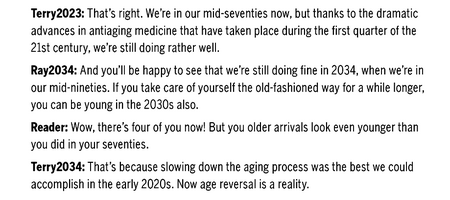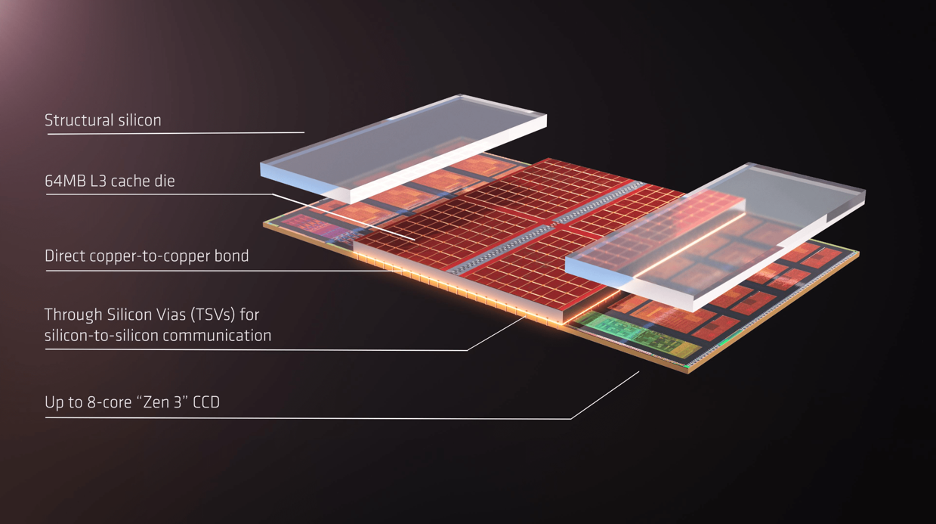barcacel
Vitantiheterodroidsexual Monk-mode MGTOW
-
- Joined
- Oct 16, 2022
- Posts
- 1,906
the most famous futurist called Ray Kurzweil made 300+ technology predictions in 1999 for 2009, 2010s, 2019, 2020s, 2029, 2030s, 2040s and 2045, as of today he got them all late but not wrong, i discovered why all his predictions are 1.52x late but right, he made an error, in 1999 he miscalculated that computational price efficiency doubled every 12 months in the world but in a 2011 study it was discovered that it doubled every 1.52 years (18 months) instead, this makes all his predictions late by 1.52x:
View: https://youtu.be/ikgAId-hWVg
View: https://youtu.be/KDtD7CSJ6m4?t=198
"Computations per kilowatt-hour doubled every 1.57 years over the entire analysis period, a rate of improvement only slightly slower than that for PCs, which saw efficiency double every 1.52 years from 1975 to 2009 (see Figure 4)"
https://www.researchgate.net/public...nds_in_the_Electrical_Efficiency_of_Computing
Kurzweil can't admit that he miscalculated because he would lose all his credibility
he also thought that the death of the fifth paradigm of computing (moore's law) would not get us off the trendline of computing, we will get back to the trendline before 2029, here is my method to calculate his predictions date and why every thing he predictied in 1999 for 2009 and 2010 happened in 2015 and 2017 instead:
for any prediction after 2030 we won't need to do this computing trendline paradigm method i speak in the spoiler above to calculate predictions for after 2030 because, by that time we would already be back in the computing paradigm trendline the video above speaks about (we would only need to use the 1.52x increase method).
The 100+ predictions made by Kurzweil in 1999 for 2009 and 2010 and evidence that they happened in 2015 and 2017 in full detail:
what does this have to do with non-sentient female android robots, slow aging tech and reverse aging tech?
side stuff:
View: https://youtu.be/ikgAId-hWVg
View: https://youtu.be/KDtD7CSJ6m4?t=198
"Computations per kilowatt-hour doubled every 1.57 years over the entire analysis period, a rate of improvement only slightly slower than that for PCs, which saw efficiency double every 1.52 years from 1975 to 2009 (see Figure 4)"
https://www.researchgate.net/public...nds_in_the_Electrical_Efficiency_of_Computing
Kurzweil can't admit that he miscalculated because he would lose all his credibility
he also thought that the death of the fifth paradigm of computing (moore's law) would not get us off the trendline of computing, we will get back to the trendline before 2029, here is my method to calculate his predictions date and why every thing he predictied in 1999 for 2009 and 2010 happened in 2015 and 2017 instead:
https://www.npr.org/templates/story/story.php?storyId=5067661#:~:text=Dr. KURZWEIL: And,at its limit.
watch this video:
View: https://youtu.be/19lZfObdAXs
When we increase 2009 by 1.52x, we get 2014.2:
2009 - 1999 = 10
10 x 1.52 = 15.2
15.2 + 1999 = 2014.2
then i take into account not being in the computing trendline (watch the video above):


i get 2015 for 2014 above
When we increase 2010 by 1.52x, i get 2015.72:
2010 - 1999 = 11
11 x 1.52 = 16.72
16.72 + 1999 = 2015.72

as you can see above we get 2017 for 2015
moore's law will die on 2025 and we will get a new paradigm that will get us back to the trendline before 2030

we know a new paradigm will be created after Moore's law dies because there have already been 5 technology paradigms in the past, look at this images made by Kurzweil using old data and old sources, look at the years 1960-1962:
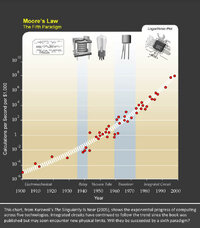

as you can see above there was a huge increase in less than one year in 1960-1962, which implies that a new paradigm can get us back to the trendline very fast, in less than one year
watch this video:
View: https://youtu.be/19lZfObdAXs
When we increase 2009 by 1.52x, we get 2014.2:
2009 - 1999 = 10
10 x 1.52 = 15.2
15.2 + 1999 = 2014.2
then i take into account not being in the computing trendline (watch the video above):


i get 2015 for 2014 above
When we increase 2010 by 1.52x, i get 2015.72:
2010 - 1999 = 11
11 x 1.52 = 16.72
16.72 + 1999 = 2015.72

as you can see above we get 2017 for 2015
moore's law will die on 2025 and we will get a new paradigm that will get us back to the trendline before 2030

we know a new paradigm will be created after Moore's law dies because there have already been 5 technology paradigms in the past, look at this images made by Kurzweil using old data and old sources, look at the years 1960-1962:


as you can see above there was a huge increase in less than one year in 1960-1962, which implies that a new paradigm can get us back to the trendline very fast, in less than one year
for any prediction after 2030 we won't need to do this computing trendline paradigm method i speak in the spoiler above to calculate predictions for after 2030 because, by that time we would already be back in the computing paradigm trendline the video above speaks about (we would only need to use the 1.52x increase method).
The 100+ predictions made by Kurzweil in 1999 for 2009 and 2010 and evidence that they happened in 2015 and 2017 in full detail:
2009, 2009 = 2015:
2010, 2010 = 2017:
he also has more predictions for the 2000s in his older books but i don't think it's necessary to discuss them
i don't speak about other predictions for the 2010s because we haven't gotten back to the computing trendline yet
source:
https://kurzweilai.net/images/How-My-Predictions-Are-Faring.pdf
1-PREDICTION: Individuals primarily use portable computers.
yes in 2015 people did
2-PREDICTION: Portable computers will have become dramatically lighter and thinner than the notebook computers of ten years earlier.
yes
3-PREDICTION: Personal computers are available in a wide range of sizes and shapes, and are commonly embedded in clothing and jewelry such as wristwatches, rings, earrings and other body ornaments.
yes we had smart clothing in 2015:
https://www.wearable-technologies.com/2015/03/a-look-at-smartclothing-for-2015/
yes we had smart jewelry in 2015:
https://techcrunch.com/2015/02/09/t...r-kit-this-spring-with-dozens-of-accessories/
yes we had smartwatches in 2015:
https://www.zdnet.com/article/10-best-smartwatches-for-the-2015-holiday-season/
4-PREDICTION: Computers with a high-resolution visual interface range from rings and pins and credit cards up to the size of a thin book.
yes we had them:
https://www.pcmag.com/reviews/neyya-smart-ring
https://www.cnbc.com/2015/09/18/whats-a-chip-card.html
5-PREDICTION: People typically have at least a dozen computers on and around their bodies, which are networked using “body LANs” (local area networks).
yes, phones, laptops, speakers and i think hotspots were all there in 2015
6-PREDICTION: For the most part, these truly personal computers have no moving parts. Memory is completely electronic.
yes
7-PREDICTION: Most portable computers do not have keyboards.
phones 2015
8-PREDICTION: Most users have servers in their homes and offices where they keep large stores of digital “objects,” including their software, databases, documents, music, and movies.
yes, people had personal computers in 2015
9-PREDICTION: Digital objects such as books, music albums, movies, and software are rapidly distributed as data files through the wireless network, and typically do not have a physical object associated with them.
in 2015 all those things could be stored digitally
10-PREDICTION: Most users have servers where they keep digital “objects” such as virtual reality environments (although these are still at an early stage).
yes, in 2014 Google Cardboard VR was released
11-PREDICTION:There are services to keep one’s digital objects in central repositories, but most people prefer to keep their private information under their own physical control.
yes, cloud services 2015
12-PREDICTION: Cables are disappearing. Communication between components, such as pointing devices, microphones, displays, printers, and the occasional keyboard uses short-distance wireless technology.
yes, bluetooth and wifi in 2015
13-PREDICTION: Computers routinely include wireless technology to plug into the ever-present worldwide network, providing reliable, instantly available, very high bandwidth communication.
yes, people had wifi in 2015
14-PREDICTION: The majority of text is created using continuous speech recognition (CSR) dictation software, but keyboards are still used. CSR is very accurate, far more so than the human transcriptionists who were used up until a few years ago.
we could do it we wanted in 2015 but people just prefer to write because it's easier and gives more privacy
15-PREDICTION: Also ubiquitous are language user interfaces (LUIs), which combine continuous speech recognition (CSR) and natural language understanding. For routine matters, such as simple business transactions and information inquiries, LUIs are quite responsive and precise. They tend to be narrowly focused, however, on specific types of tasks. LUIs are frequently combined with animated personalities. Interacting with an animated personality to conduct a purchase or make a reservation is like talking to a person using videoconferencing, except that the person is simulated.
yes, Amazon Alexa was released in 2014
16-PREDICTION: Computer displays have all the display qualities of paper — high resolution, high contrast, large viewing angle, and no flicker. Books, magazines, and newspapers are now routinely read on displays that are the size of, well, small books.
yes, we had e-readers in 2015, also phones and tablets
17-PREDICTION: Computer displays built into eyeglasses are also used. These specialized glasses allow users to see the normal visual environment, while creating a virtual image that appears to hover in front of the viewer. The virtual images are created by a tiny laser built into the glasses that projects the images directly onto the user’s retinas.
yes, Google Cardboard VR was released in 2014
18-PREDICTION: Computers routinely include moving picture image cameras and are able to reliably identify their owners from their faces.
face recognition software was available in 2015
19-PREDICTION: In terms of circuitry, three-dimensional chips are commonly used, and there is a transition taking place from the older single-layer chips.
this is the sixth paradigm of computing, as i explain above he miscalculated this
20-PREDICTION: Sound producing speakers are being replaced with very small chip-based devices that can place high-resolution sound anywhere in three-dimensional space. This technology is based on creating audible frequency sounds from the spectrum created by the interaction of very high frequency tones. As a result, very small speakers can create very robust three-dimensional sound.
yes
21-A $1,000 personal computer can perform about a trillion calculations per second
i don't have the data on that
22-PREDICTION: Supercomputers match at least the hardware capacity of the human brain — 20 million billion calculations per second (20 petaflops).
yes:
https://www.top500.org/statistics/perfdevel/
23-PREDICTION: Unused computes on the Internet are being harvested, creating virtual parallel supercomputers with human brain hardware capacity.
i don't know what this means
24-PREDICTION: There is increasing interest in massively parallel neural nets, genetic algorithms and other forms of “chaotic” or complexity theory computing, although most computer computations are still done using conventional sequential processing, albeit with some limited parallel processing.
yes
25-PREDICTION: Autonomous nanoengineered machines (i.e., machines constructed atom by atom and molecule by molecule) have been demonstrated and include their own computational controls. However, nanoengineering is not yet considered a practical technology.
yes:
https://www.engadget.com/2015-01-23-nanobots-in-mice-do-the-twist.html
26-PREDICTION: Research has been initiated on reverse-engineering the human brain through both destructive scans of the brains of recently deceased persons as well as noninvasive scans using high resolution magnetic resonance imaging (MRI) of living persons and animals.
yes
27-PREDICTION: In the twentieth century, computers in schools were mostly on the trailing edge, with most effective learning from computers taking place in the home. Now in 2009, while schools are still not on the cutting edge, the profound importance of the computer as a knowledge tool is widely recognized.
yes, schools had computers and computer classes in 2015
28-PREDICTION: Computers play a central role in all facets of education, as they do in other spheres of life.
teachers had computers in 2015 and most people learned thing trough their computers
29-PREDICTION: The majority of reading is done on displays, although the “installed base” of paper documents is still formidable.
yes, in 2015 we mostly used phones and computers to read things
30-PREDICTION: The generation of paper documents is dwindling, as the books and other papers of largely twentieth century vintage are being rapidly scanned and stored.
yes, most books were digitized in 2015
31-PREDICTION: Documents, circa 2009, routinely include embedded moving images and sounds.
yes, we had videos in 2015
31-PREDICTION: Students of all ages typically have a computer of their own, which is a thin tablet-like device weighing under a pound with a very high-resolution display suitable for reading.
yes, all students had phones in 2015
32-PREDICTION: Students interact with their computers primarily by voice and by pointing with a device that looks like a pencil.
yes, we had voice recognition software and electronic smartpens in 2015
33-PREDICTION: Keyboards still exist, but most textual language is created by speaking.
we could have done it if we wanted to in 2015 but people prefer to have convenience and privacy
34-PREDICTION:Learning materials are accessed through wireless communication.
yes, in 2015 you could learn anything on the internet
35-PREDICTION: Intelligent courseware has emerged as a common means of learning.
yes, we had online courses in 2015
36-PREDICTION: Recent controversial studies have shown that students can learn basic skills such as reading and math just as readily with interactive learning software as with human teachers, particularly when the ratio of students to human teachers is more than one to one. Although the studies have come under attack, most students and their parents have accepted this notion for years.
yes
37-PREDICTION: The traditional mode of a human teacher instructing a group of children is still prevalent, but schools are increasingly relying on software approaches, leaving human teachers to attend primarily to issues of motivation, psychological well-being, and socialization.
yes
38-PREDICTION: Many children learn to read on their own using their personal computers before entering grade school.
yes
39-PREDICTION: Preschool and elementary school children routinely read at their intellectual level using print-to-speech reading software until their reading skill level catches up.
this was not popular but did happen
40-PREDICTION: These print-to-speech reading systems display the full image of documents, and can read the print aloud while highlighting what is being read.
yes
41-PREDICTION: Synthetic voices sound fully human.
yes
42-PREDICTION: Although some educators expressed concern in the early ‘00 years that students would rely unduly on reading software, such systems have been readily accepted by children and their parents.
yes
43-PREDICTION: Studies have shown that students improve their reading skills by being exposed to synchronized visual and auditory presentations of text.
yes
44-PREDICTION: Learning at a distance (e.g., lectures and seminars in which the participants are geographically scattered) is commonplace
yes, we had videoconferencing in 2015
45-PREDICTION: Learning is becoming a significant portion of most jobs.
yes
46-PREDICTION: Training and developing new skills is emerging as an ongoing responsibility in most careers, not just an occasional supplement, as the level of skill needed for meaningful employment soars ever higher.
yes
47-PREDICTION: Persons with disabilities are rapidly overcoming their handicaps through the intelligent technology of 2009.
yes:
https://www.forbes.com/sites/zackmi...ives-of-the-disabled-in-2015/?sh=13409d3112e1
48-PREDICTION: Students with reading disabilities routinely ameliorate their disability using print-to-speech reading systems.
yes:
View: https://youtu.be/oG-Aq_drV4I
49-PREDICTION: Print-to-speech reading machines for the blind are now very small, inexpensive, palm-sized devices that can read books (those that still exist in paper form) and other printed documents, and other real-world text such as signs and displays.
yes:
https://www.educatorstechnology.com/2015/11/5-great-apps-for-visually-impaired.html
50-PREDICTION: These reading systems are equally adept at reading the trillions of electronic documents that are instantly available from the ubiquitous wireless worldwide network.
yes
51-PREDICTION: After decades of ineffective attempts, useful navigation devices have been introduced that can assist blind people in avoiding physical obstacles in their path, and finding their way around, using global positioning system (“GPS”) technology.
yes:
View: https://youtu.be/R36ngPRXH8E
52-PREDICTION: A blind person can interact with her personal reading-navigation systems through voice communication, kind of like a Seeing Eye dog that reads and talks.
yes
53-PREDICTION: Deaf persons — or anyone with a hearing impairment — commonly use portable speech-to-text listening machines, which display a real-time transcription of what people are saying. The deaf user has the choice of either reading the transcribed speech as displayed text, or watching an animated person gesturing in sign language. These have eliminated the primary communication handicap associated with deafness.
yes:
View: https://youtu.be/rExvbJ8Cnqg
54-PREDICTION: Listening machines can also translate what is being said into another language in real time, so they are commonly used by hearing people as well.
yes, google translate
55-PREDICTION: Computer-controlled orthotic devices have been introduced. These “walking machines” enable paraplegic persons to walk and climb stairs. The prosthetic devices are not yet usable by all paraplegic persons, as many physically disabled persons have dysfunctional joints from years of disuse. However, the advent of orthotic walking systems is providing more motivation to have these joints replaced.
yes:
View: https://youtu.be/_JWxSb7-l_U
56-PREDICTION: There is a growing perception that the primary disabilities of blindness, deafness, and physical impairment do not necessarily impart handicaps. Disabled persons routinely describe their disabilities as mere inconveniences. Intelligent technology has become the great leveler.
yes
57-PREDICTION: Translating telephone technology (where you speak in English and your Japanese friend hears you in Japanese, and vice versa) is commonly used for many language pairs. It is a routine capability of an individual’s personal computer.
it was not popular, but it was possible:
View: https://youtu.be/iD-Bfd2flLI
58-PREDICTION: …which also serves as her phone.
yes
59-PREDICTION: “Telephone” communication is primarily wireless.
yes
60-PREDICTION: …and routinely includes high-resolution moving images.
yes, we had videos in phones in 2015
61-PREDICTION: Meetings of all kinds and sizes routinely take place among geographically separated participants.
yes, videoconferencing
62-PREDICTION: There is effective convergence, at least on the hardware and supporting software level, of all media, which exist as digital objects (i.e., files).
yes
63-PREDICTION: …distributed by the ever-present, high-bandwidth, wireless information web.
yes
64-PREDICTION: Users can instantly download books, magazines, newspapers, television, radio, movies, and other forms of software to their highly portable personal communication devices.
yes
65-PREDICTION: Virtually all communication is digital and encrypted…
i don't know what this means
66-PREDICTION: …with keys available to government authorities.
i don't know what this means
67-PREDICTION: Many individuals and groups, including but not limited to criminal organizations, use an additional layer of virtually unbreakable encryption codes with no third party keys.
i don't know what this means
68-PREDICTION: Haptic technologies are emerging that allow people to touch and feel objects and other persons at a distance.
yes:
https://www.wearable-technologies.com/2015/09/how-new-haptic-wearable-devices-move-our-life/
69-PREDICTION: These force feedback devices are widely used in games and in training simulation systems.
yes:

 youtu.be
youtu.be

 youtu.be
70-PREDICTION: VR Interactive games routinely include all-encompassing visual and auditory environments…
youtu.be
70-PREDICTION: VR Interactive games routinely include all-encompassing visual and auditory environments…
yes
71-PREDICTION: …but a satisfactory, all-encompassing tactile VR environment is not yet available.
yes, google cardboard (2014) didn't have any tactile tools, the VR products with tactile features were launched in 2016
72-PREDICTION: The online chat rooms of the late 1990s have been replaced with virtual environments where you can meet people with full visual realism.
yes, online games
73-PREDICTION: People have sexual experiences at a distance with other persons as well as virtual partners.
yes, you could have relationships and sex in second life (and other games) with other people and there were sex games with NPC females in 2015
74-PREDICTION: But the lack of the “surround” tactile environment has thus far kept virtual sex out of the mainstream.
yes
75-PREDICTION: Virtual partners are popular as forms of sexual entertainment, but they are more game-like than real.
yes, npc sex games
76-PREDICTION: And phone sex is a lot more popular now that phones routinely include high resolution real-time moving images of the person on the other end.
yes, in 2015 people video called each other to masturbate in front of each other or dirty talk with the other in a call
77- PREDICTION: Despite occasional corrections, the ten years leading up to 2009 have seen continuous economic expansion and prosperity due to the dominance of the knowledge content of products and services.
yes:
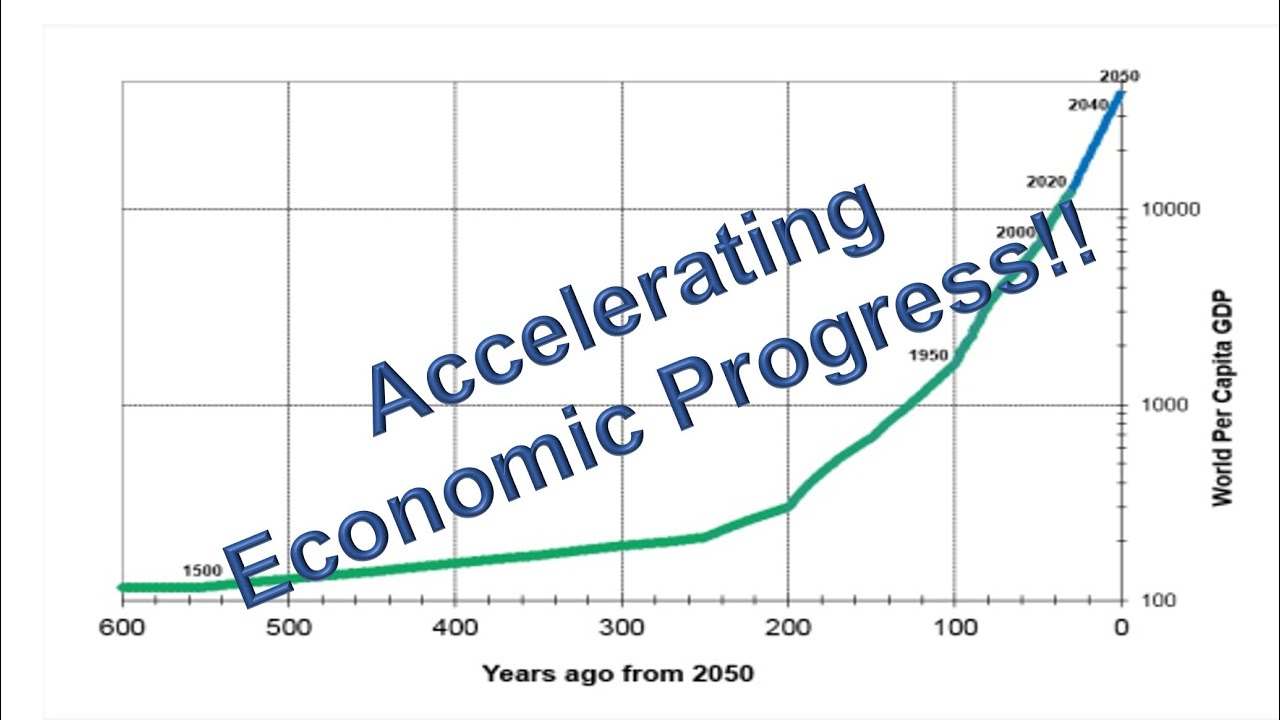
 youtu.be
78-PREDICTION: The greatest gains continue to be in the value of the stock market
youtu.be
78-PREDICTION: The greatest gains continue to be in the value of the stock market
yes
79-PREDICTION: Price deflation concerned economists in the early ’00 years, but they quickly realized it was a good thing. The high tech community pointed out that significant deflation had existed in the computer hardware and software industries for many years earlier without detriment.
i don't know
80-PREDICTION: The United States continues to be the economic leader due to its primacy in popular culture and its entrepreneurial environment.
yes
81-PREDICTION: Since information markets are largely world markets, the U.S. has benefited greatly from its immigrant history. Being comprised of all the world’s peoples — specifically, the descendants of peoples from around the globe who had endured great risk for a better life — it has the ideal heritage for the new knowledge-based economy.
yes
82-PREDICTION: China has also emerged as a powerful economic player.
yes
83-PREDICTION: Europe has been somewhat quicker than Japan and Korea in adopting the American emphasis on venture capital, employee stock options, and tax policies that encourage entrepreneurship, although these practices have become popular throughout the world.
yes
84-PREDICTION: At least half of all transactions are conducted on-line.
i don't know
85-PREDICTION: Intelligent assistants which combine continuous speech recognition, natural language understanding, problem solving, and animated personalities routinely assist with finding information, answering questions and conducting transactions. Intelligent assistants have become a primary interface for interacting with information-based services, with a wide range of choices available. A recent poll shows that both male and female users prefer female personalities for their computer-based intelligent assistants. The two most popular are Maggie, who claims to be a waitress in a Harvard Square café, and Michelle, a stripper from New Orleans. Personality designers are in demand, and the field constitutes a growth area in software development.
yes, Amazon Alexa was released in 2014
86-PREDICTION: Most purchases of books, musical “albums,” videos, games and other forms of software do not involve any physical object, so new business models for distributing these forms of information have emerged.
yes
87-PREDICTION: One shops for these information objects by “strolling” through virtual malls, sampling and selecting objects of interest, rapidly (and securely) conducting an on-line transaction, and then quickly downloading the information using high-speed wireless communication.
yes, websites, steam and more
88-PREDICTION: There are many types and gradations of transactions to gain access to these products. You can “buy” a book, musical album, video, etc. which gives you unlimited permanent access.
yes
89-PREDICTION: Alternatively, you can rent access to read, view, or listen once, or a few times. Or you can rent access by the minute.
yes
90-PREDICTION: Access may be limited to one person or to a group of persons (for example, a family or a company). Alternatively, access may be limited to a particular computer, or to any computer accessed by a particular person or by a set of persons.
yes
91-PREDICTION: There is a strong trend towards the geographic separation of work groups. People are successfully working together despite living and working in different places.
yes
92-PREDICTION: The average household has more than a hundred computers, most of which are embedded in appliances and built-in communication systems.
yes, examples of embedded microprocessors in a modern home include microwave ovens, washing machines, dishwashers, alarm clocks, and high-end home automation systems. They are also found in virtually all consumer electronics devices, including TV sets, remote controls, videogame consoles, Blueray and DVD players, digital cameras, digital watches, digital telephones, electronic toys, calculators, digital audio recorders, digital camcorders, GPS devices, digital video recorders, electronic musical instruments, and MP3 players. Embedded microprocessors are also found in routers, Wi-Fi access points, and cable modems, as well as in computer peripherals such as mice, keyboards, external USB drives, scanners, and printers
93-PREDICTION: Household robots have emerged, but are not yet fully accepted.
yes (next product was not released in 2015):
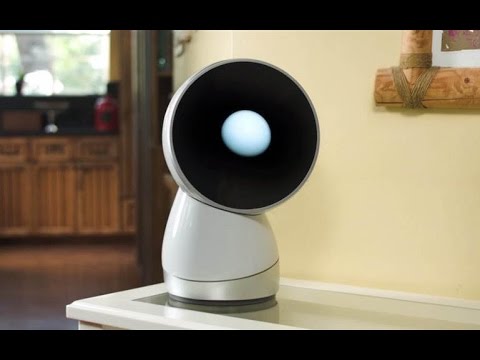
 youtu.be
he might be talking about robotic vacuum cleaners, dyson 360 was launched in 2014:
youtu.be
he might be talking about robotic vacuum cleaners, dyson 360 was launched in 2014:
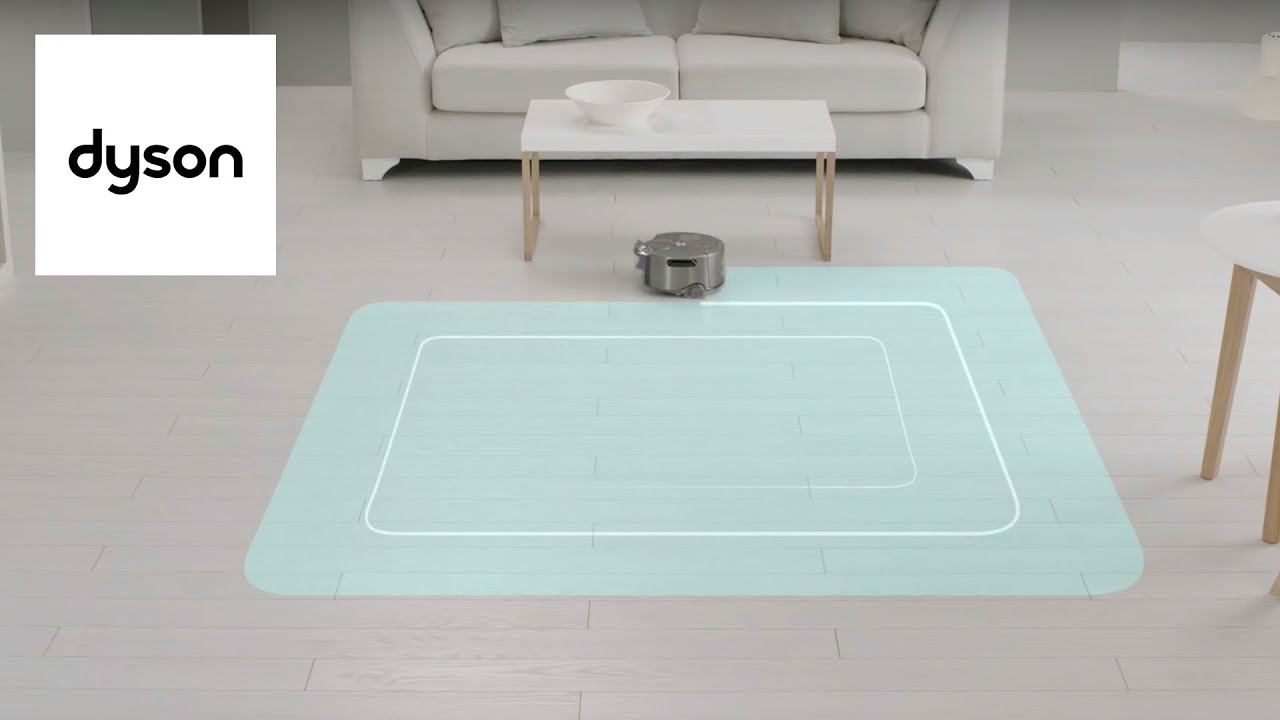
 youtu.be
94-PREDICTION: Intelligent roads are in use, primarily for long-distance travel. Once your car’s computer guidance system locks onto the control sensors on one of these highways, you can sit back and relax. Local roads, though, are still predominantly conventional.
youtu.be
94-PREDICTION: Intelligent roads are in use, primarily for long-distance travel. Once your car’s computer guidance system locks onto the control sensors on one of these highways, you can sit back and relax. Local roads, though, are still predominantly conventional.
yes, tesla enabled autopilot for model S drivers in October 2015, these intelligent roads were not in use because of convenience, we could have had intelligent roads if we wanted to in 2015, some people tested them in Virginian on 2015:

 www.worldhighways.com
95-PREDICTION: A company west of the Mississippi and north of the Mason-Dixon Line has surpassed a trillion dollars in market capitalization.
www.worldhighways.com
95-PREDICTION: A company west of the Mississippi and north of the Mason-Dixon Line has surpassed a trillion dollars in market capitalization.
he refers to Microsoft and it didn't in 2015, but this is not a technology prediction and he admits that is was just a tongue-in-cheek, so we should ignore it:
https://kurzweilai.net/images/How-My-Predictions-Are-Faring.pdf (page 85)
96-PREDICTION: Privacy has emerged as a primary political issue. The virtually constant use of electronic communication technologies is leaving a highly detailed trail of every person’s every move.
yes
97-PREDICTION: Litigation, of which there has been a great deal, has placed some constraints on the widespread distribution of personal data.
yes
98-PREDICTION: Government agencies, however, continue to have the right to gain access to people’s files…
yes:
there is a law in effect that makes it easy for the U.S. government to access private communications. The Communications Assistance for Law Enforcement Act (CALEA)
99-PREDICTION: …which has resulted in the popularity of unbreakable encryption technologies.
i don't know
100-PREDICTION: There is a growing neo-Luddite movement, as the skill ladder continues to accelerate upwards.
yes
101-PREDICTION: As with earlier Luddite movements, its influence is limited by the level of prosperity made possible by new technology.
yes
102-PREDICTION: The movement does succeed in establishing continuing education as a primary right associated with employment.
i don't know
103-PREDICTION: There is continuing concern with an underclass that the skill ladder has left far behind. The size of the underclass appears to be stable, however.
yes
104-PREDICTION: Although not politically popular, the underclass is politically neutralized through public assistance and the generally high level of affluence.
yes
105-PREDICTION: The high quality of computer screens, and the facilities of computer-assisted visual rendering software, have made the computer screen a medium of choice for visual art.
yes
106-PREDICTION: Most visual art is the result of collaboration between human artists and their intelligent art software.
yes
107-PREDICTION: Virtual paintings — high-resolution, wall-hung displays — have become popular. Rather than always displaying the same work of art, as with a conventional painting or poster, these virtual paintings can change the displayed work at the user’s verbal command, or can cycle through collections of art. The displayed artwork can be works by human artists or original art created in real time by cybernetic art software
yes
108-PREDICTION: Human musicians routinely jam with cybernetic musicians.
yes, games like guitar hero, software helped users copy songs or make songs
109-PREDICTION: The creation of music has become available to persons who are not musicians.
yes
110-PREDICTION: Creating music does not necessarily require the fine motor coordination of using traditional controllers.
yes
111-PREDICTION: Cybernetic music creation systems allow people who appreciate music but who are not knowledgeable about music theory and practice to create music in collaboration with their automatic composition software.
yes
112-PREDICTION: Interactive brain-generated music, which creates a resonance between the user’s brainwaves and the music being listened to, is another popular genre.
i don't know what gender he is talking about, this has to do with what people like and not technology, so we can ignore it
113-PREDICTION: Musicians commonly use electronic controllers which emulate the playing style of the old acoustic instruments (e.g., piano, guitar, violin, drums).
yes
114-PREDICTION: …but there is a surge of interest in the new “air” controllers in which you create music by moving your hands, feet, mouth and other body parts.
yes:

 youtu.be
115-PREDICTION: Other music controllers involve interacting with specially designed devices.
youtu.be
115-PREDICTION: Other music controllers involve interacting with specially designed devices.
yes
116-PREDICTION: Writers use voice-activated word processing…
yes:

 selfpublishingadvice.org
117-PREDICTION: Grammar checkers are now actually useful.
selfpublishingadvice.org
117-PREDICTION: Grammar checkers are now actually useful.
yes
118-PREDICTION: Distribution of written documents from articles to books typically does not involve paper and ink.
yes
119-PREDICTION: Style improvement and automatic editing software is widely used to improve the quality of writing.
yes
120-PREDICTION: Language translation software is also widely used to translate written works in a variety of languages
yes
121-PREDICTION: Nonetheless, the core process of creating written language is less affected by intelligent software technologies than the visual and musical arts. However, “cybernetic” authors are emerging.
yes
122-PREDICTION: Beyond music recordings, images, and movie videos, the most popular type of digital entertainment object is virtual experience software. These interactive virtual environments allow you to go whitewater rafting on virtual rivers, to hang glide in a virtual Grand Canyon, or to engage in intimate encounters with your favorite movie star.
yes, he is not talking about VR, he is talking about games
123-PREDICTION: Users also experience fantasy environments with no counterpart in the physical world.
yes
124-PREDICTION: The visual and auditory experience of virtual reality is compelling, but tactile interaction is still limited.
yes, we couldn't have any tactile experience in VR on 2015, until 2016
125-PREDICTION: The security of computation and communication is the primary focus of the U.S. Department of Defense. There is general recognition that the side that can maintain the integrity of its computational resources will dominate the battlefield.
i don't know
126-PREDICTION: Humans are generally far removed from the scene of battle.
in 2015 the US army used drones and started testing technologies like this:
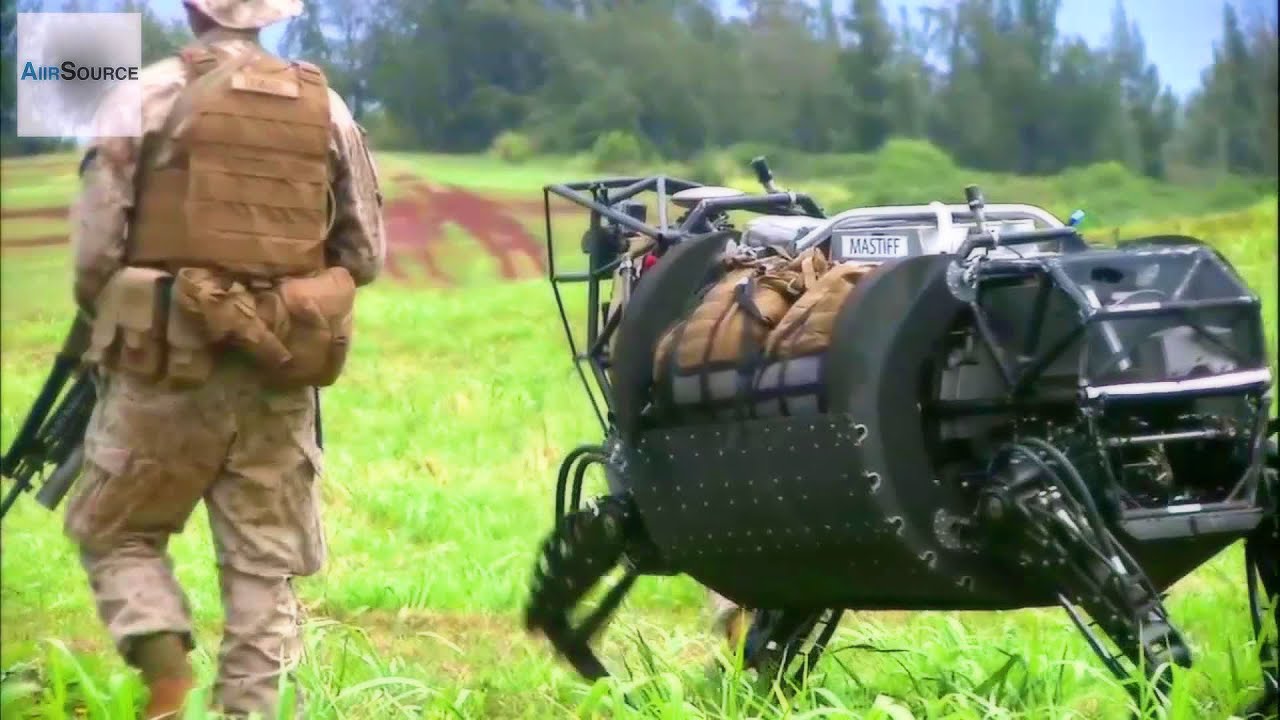
 youtu.be
127-PREDICTION: Warfare is dominated by unmanned intelligent airborne devices.
youtu.be
127-PREDICTION: Warfare is dominated by unmanned intelligent airborne devices.
i don't know but the US army used many unmanned aerial vehicle (UAV) in 2015
128-PREDICTION: Many of these flying weapons are the size of small birds, or smaller.
yes:
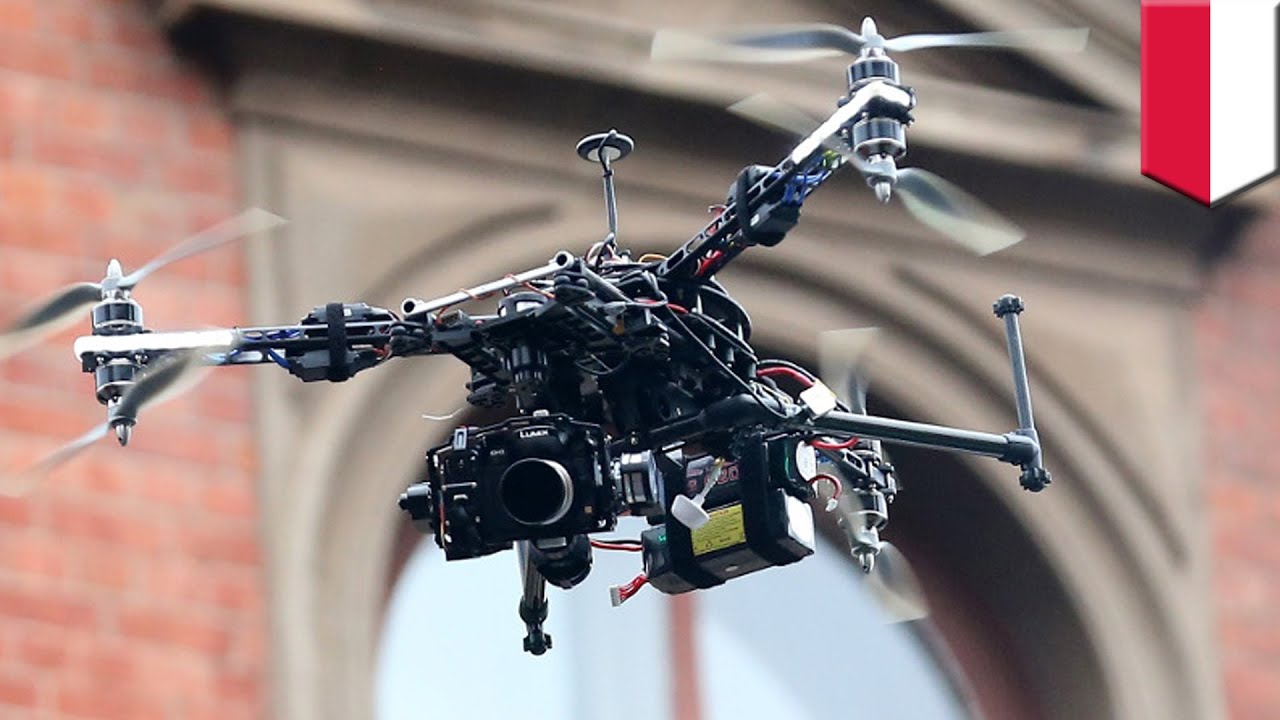
 youtu.be
youtu.be

 youtu.be
youtu.be
 www.computerworld.com
129-PREDICTION: The U.S. continues to be the world’s dominant military power, which is largely accepted by the rest of the world, as most countries concentrate on economic competition.
www.computerworld.com
129-PREDICTION: The U.S. continues to be the world’s dominant military power, which is largely accepted by the rest of the world, as most countries concentrate on economic competition.
yes
130-PREDICTION: Military conflicts between nations are rare, and most conflicts are between nations and smaller bands of terrorists.
yes
131-PREDICTION: The greatest threat to national security comes from bioengineered weapons.
i don't know
132-PREDICTION: Bioengineered treatments have reduced the toll from cancer, heart disease, and a variety of other health problems.
yes
133-PREDICTION: Significant progress is being made in understanding the information processing basis of disease.
yes
134-PREDICTION: Telemedicine is widely used. Physicians can examine patients using visual, auditory and haptic examination from a distance. Health clinics with relatively inexpensive equipment and a single technician bring health care to remote areas where doctors had previously been scarce.
some did:
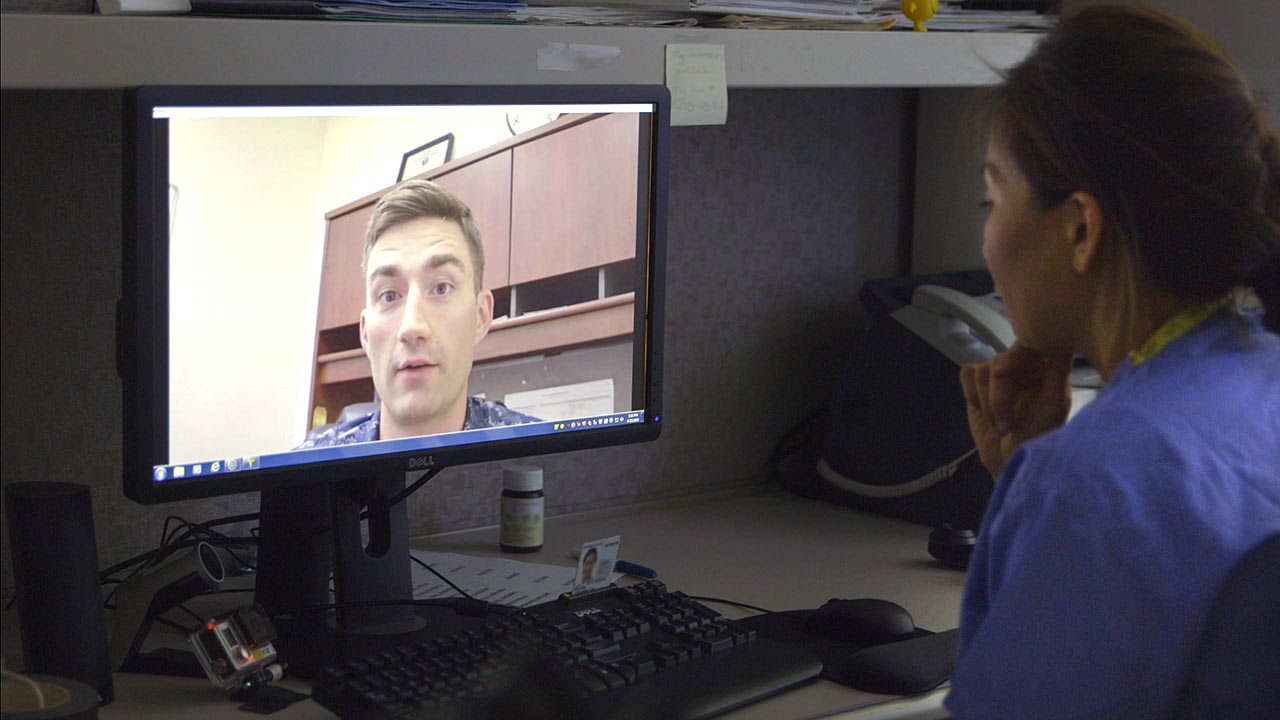
 youtu.be
youtu.be
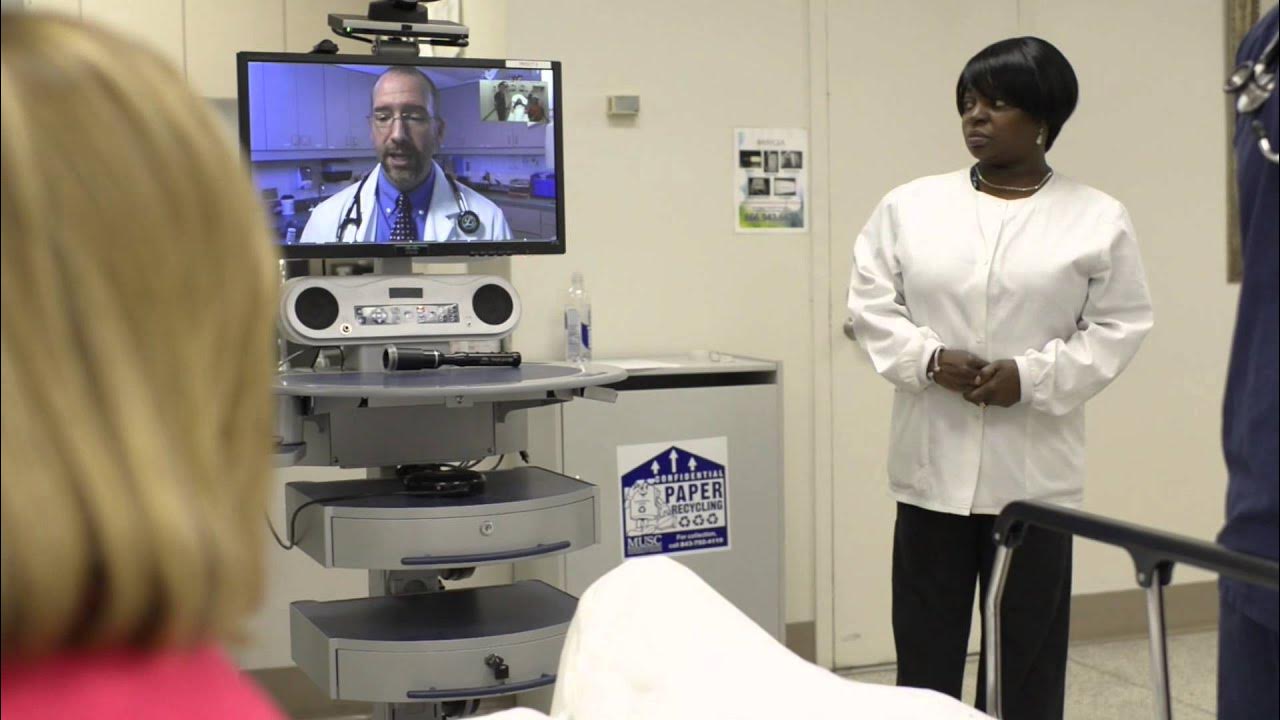
 youtu.be
135-PREDICTION: Computer-based pattern recognition is routinely used to interpret imaging data and other diagnostic procedures.
youtu.be
135-PREDICTION: Computer-based pattern recognition is routinely used to interpret imaging data and other diagnostic procedures.
i don't know
136-PREDICTION: The use of noninvasive imaging technologies has substantially increased.
yes:

 youtu.be
137-PREDICTION: Diagnosis almost always involves collaboration between a human physician and a pattern recognition-based expert system.
youtu.be
137-PREDICTION: Diagnosis almost always involves collaboration between a human physician and a pattern recognition-based expert system.
i don't know
138-PREDICTION: Doctors routinely consult knowledge-based systems (generally through two-way voice communication augmented by visual displays), which provide automated guidance, access to the most recent medical research, and practice guidelines.
we could have had this but as i explain above, voice recognition is not convenient and there is no privacy
139-PREDICTION: Lifetime patient records are maintained in computer databases.
yes
140-PREDICTION: Privacy issues concerning access to these records (as with many other data bases of personal information) have emerged as a major issue.
i don't know
141-PREDICTION: Doctors routinely train in virtual reality environments, which include a haptic interface. These systems simulate the visual, auditory and tactile experience of medical procedures, including surgery.
yes:

 youtu.be
youtu.be
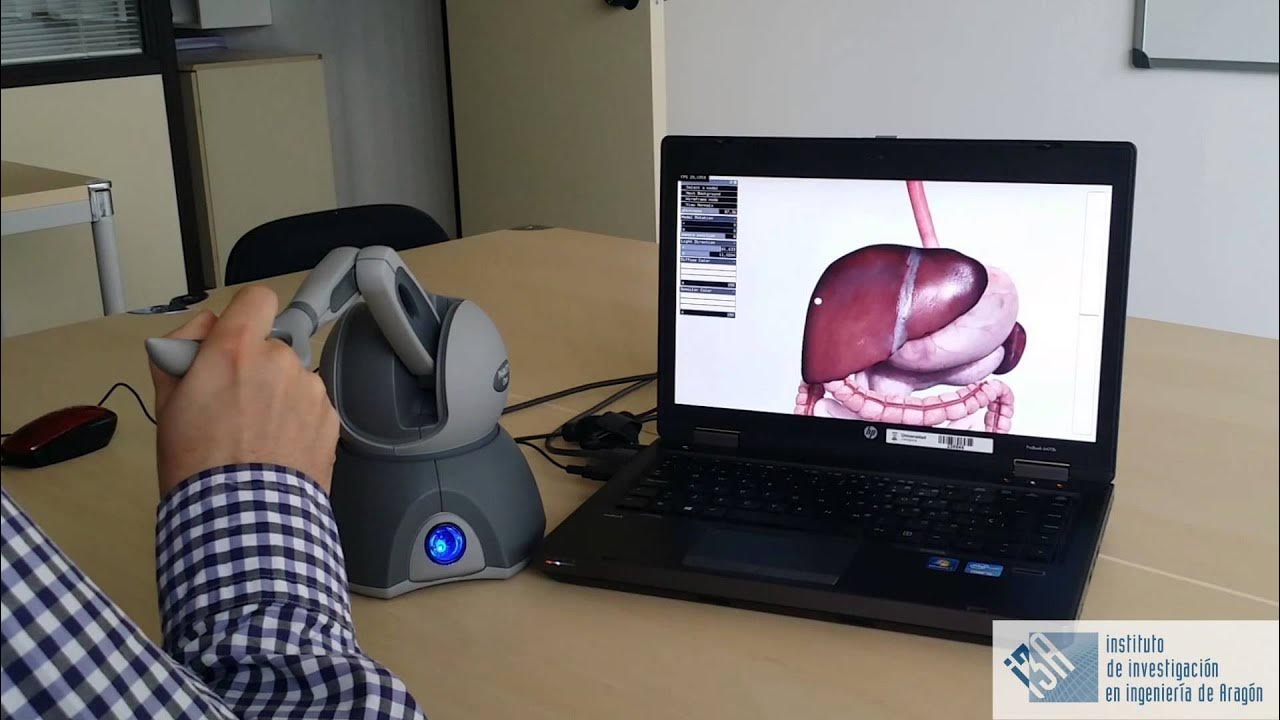
 youtu.be
youtu.be

 youtu.be
youtu.be

 youtu.be
142-PREDICTION: Simulated patients are available for continuing medical education, for medical students, and for people who just want to play doctor.
youtu.be
142-PREDICTION: Simulated patients are available for continuing medical education, for medical students, and for people who just want to play doctor.
yes
143-PREDICTION: There is renewed interest in the Turing test, first proposed by Alan Turing in 1950 as a means for testing intelligence in a machine. Recall that the Turing test contemplates a situation in which a human judge interviews the computer and a human “foil,” communicating with both over terminal lines. If the human judge is unable to tell which interviewee is human and which is machine, the machine is deemed to possess human-level intelligence.
yes
144-PREDICTION: Although computers still fail the test, confidence is increasing that they will be in a position to pass it within another one or two decades.
yes
145-PREDICTION: There is serious speculation on the potential sentience (i.e., consciousness) of computer-based intelligence.
yes
146-PREDICTION: The increasingly apparent intelligence of computers has spurred an interest in philosophy.
yes
https://kurzweilai.net/images/How-My-Predictions-Are-Faring.pdf
1-PREDICTION: Individuals primarily use portable computers.
yes in 2015 people did
2-PREDICTION: Portable computers will have become dramatically lighter and thinner than the notebook computers of ten years earlier.
yes
3-PREDICTION: Personal computers are available in a wide range of sizes and shapes, and are commonly embedded in clothing and jewelry such as wristwatches, rings, earrings and other body ornaments.
yes we had smart clothing in 2015:
https://www.wearable-technologies.com/2015/03/a-look-at-smartclothing-for-2015/
yes we had smart jewelry in 2015:
https://techcrunch.com/2015/02/09/t...r-kit-this-spring-with-dozens-of-accessories/
yes we had smartwatches in 2015:
https://www.zdnet.com/article/10-best-smartwatches-for-the-2015-holiday-season/
4-PREDICTION: Computers with a high-resolution visual interface range from rings and pins and credit cards up to the size of a thin book.
yes we had them:
https://www.pcmag.com/reviews/neyya-smart-ring
https://www.cnbc.com/2015/09/18/whats-a-chip-card.html
5-PREDICTION: People typically have at least a dozen computers on and around their bodies, which are networked using “body LANs” (local area networks).
yes, phones, laptops, speakers and i think hotspots were all there in 2015
6-PREDICTION: For the most part, these truly personal computers have no moving parts. Memory is completely electronic.
yes
7-PREDICTION: Most portable computers do not have keyboards.
phones 2015
8-PREDICTION: Most users have servers in their homes and offices where they keep large stores of digital “objects,” including their software, databases, documents, music, and movies.
yes, people had personal computers in 2015
9-PREDICTION: Digital objects such as books, music albums, movies, and software are rapidly distributed as data files through the wireless network, and typically do not have a physical object associated with them.
in 2015 all those things could be stored digitally
10-PREDICTION: Most users have servers where they keep digital “objects” such as virtual reality environments (although these are still at an early stage).
yes, in 2014 Google Cardboard VR was released
11-PREDICTION:There are services to keep one’s digital objects in central repositories, but most people prefer to keep their private information under their own physical control.
yes, cloud services 2015
12-PREDICTION: Cables are disappearing. Communication between components, such as pointing devices, microphones, displays, printers, and the occasional keyboard uses short-distance wireless technology.
yes, bluetooth and wifi in 2015
13-PREDICTION: Computers routinely include wireless technology to plug into the ever-present worldwide network, providing reliable, instantly available, very high bandwidth communication.
yes, people had wifi in 2015
14-PREDICTION: The majority of text is created using continuous speech recognition (CSR) dictation software, but keyboards are still used. CSR is very accurate, far more so than the human transcriptionists who were used up until a few years ago.
we could do it we wanted in 2015 but people just prefer to write because it's easier and gives more privacy
15-PREDICTION: Also ubiquitous are language user interfaces (LUIs), which combine continuous speech recognition (CSR) and natural language understanding. For routine matters, such as simple business transactions and information inquiries, LUIs are quite responsive and precise. They tend to be narrowly focused, however, on specific types of tasks. LUIs are frequently combined with animated personalities. Interacting with an animated personality to conduct a purchase or make a reservation is like talking to a person using videoconferencing, except that the person is simulated.
yes, Amazon Alexa was released in 2014
16-PREDICTION: Computer displays have all the display qualities of paper — high resolution, high contrast, large viewing angle, and no flicker. Books, magazines, and newspapers are now routinely read on displays that are the size of, well, small books.
yes, we had e-readers in 2015, also phones and tablets
17-PREDICTION: Computer displays built into eyeglasses are also used. These specialized glasses allow users to see the normal visual environment, while creating a virtual image that appears to hover in front of the viewer. The virtual images are created by a tiny laser built into the glasses that projects the images directly onto the user’s retinas.
yes, Google Cardboard VR was released in 2014
18-PREDICTION: Computers routinely include moving picture image cameras and are able to reliably identify their owners from their faces.
face recognition software was available in 2015
19-PREDICTION: In terms of circuitry, three-dimensional chips are commonly used, and there is a transition taking place from the older single-layer chips.
this is the sixth paradigm of computing, as i explain above he miscalculated this
20-PREDICTION: Sound producing speakers are being replaced with very small chip-based devices that can place high-resolution sound anywhere in three-dimensional space. This technology is based on creating audible frequency sounds from the spectrum created by the interaction of very high frequency tones. As a result, very small speakers can create very robust three-dimensional sound.
yes
21-A $1,000 personal computer can perform about a trillion calculations per second
i don't have the data on that
22-PREDICTION: Supercomputers match at least the hardware capacity of the human brain — 20 million billion calculations per second (20 petaflops).
yes:
https://www.top500.org/statistics/perfdevel/
23-PREDICTION: Unused computes on the Internet are being harvested, creating virtual parallel supercomputers with human brain hardware capacity.
i don't know what this means
24-PREDICTION: There is increasing interest in massively parallel neural nets, genetic algorithms and other forms of “chaotic” or complexity theory computing, although most computer computations are still done using conventional sequential processing, albeit with some limited parallel processing.
yes
25-PREDICTION: Autonomous nanoengineered machines (i.e., machines constructed atom by atom and molecule by molecule) have been demonstrated and include their own computational controls. However, nanoengineering is not yet considered a practical technology.
yes:
https://www.engadget.com/2015-01-23-nanobots-in-mice-do-the-twist.html
26-PREDICTION: Research has been initiated on reverse-engineering the human brain through both destructive scans of the brains of recently deceased persons as well as noninvasive scans using high resolution magnetic resonance imaging (MRI) of living persons and animals.
yes
27-PREDICTION: In the twentieth century, computers in schools were mostly on the trailing edge, with most effective learning from computers taking place in the home. Now in 2009, while schools are still not on the cutting edge, the profound importance of the computer as a knowledge tool is widely recognized.
yes, schools had computers and computer classes in 2015
28-PREDICTION: Computers play a central role in all facets of education, as they do in other spheres of life.
teachers had computers in 2015 and most people learned thing trough their computers
29-PREDICTION: The majority of reading is done on displays, although the “installed base” of paper documents is still formidable.
yes, in 2015 we mostly used phones and computers to read things
30-PREDICTION: The generation of paper documents is dwindling, as the books and other papers of largely twentieth century vintage are being rapidly scanned and stored.
yes, most books were digitized in 2015
31-PREDICTION: Documents, circa 2009, routinely include embedded moving images and sounds.
yes, we had videos in 2015
31-PREDICTION: Students of all ages typically have a computer of their own, which is a thin tablet-like device weighing under a pound with a very high-resolution display suitable for reading.
yes, all students had phones in 2015
32-PREDICTION: Students interact with their computers primarily by voice and by pointing with a device that looks like a pencil.
yes, we had voice recognition software and electronic smartpens in 2015
33-PREDICTION: Keyboards still exist, but most textual language is created by speaking.
we could have done it if we wanted to in 2015 but people prefer to have convenience and privacy
34-PREDICTION:Learning materials are accessed through wireless communication.
yes, in 2015 you could learn anything on the internet
35-PREDICTION: Intelligent courseware has emerged as a common means of learning.
yes, we had online courses in 2015
36-PREDICTION: Recent controversial studies have shown that students can learn basic skills such as reading and math just as readily with interactive learning software as with human teachers, particularly when the ratio of students to human teachers is more than one to one. Although the studies have come under attack, most students and their parents have accepted this notion for years.
yes
37-PREDICTION: The traditional mode of a human teacher instructing a group of children is still prevalent, but schools are increasingly relying on software approaches, leaving human teachers to attend primarily to issues of motivation, psychological well-being, and socialization.
yes
38-PREDICTION: Many children learn to read on their own using their personal computers before entering grade school.
yes
39-PREDICTION: Preschool and elementary school children routinely read at their intellectual level using print-to-speech reading software until their reading skill level catches up.
this was not popular but did happen
40-PREDICTION: These print-to-speech reading systems display the full image of documents, and can read the print aloud while highlighting what is being read.
yes
41-PREDICTION: Synthetic voices sound fully human.
yes
42-PREDICTION: Although some educators expressed concern in the early ‘00 years that students would rely unduly on reading software, such systems have been readily accepted by children and their parents.
yes
43-PREDICTION: Studies have shown that students improve their reading skills by being exposed to synchronized visual and auditory presentations of text.
yes
44-PREDICTION: Learning at a distance (e.g., lectures and seminars in which the participants are geographically scattered) is commonplace
yes, we had videoconferencing in 2015
45-PREDICTION: Learning is becoming a significant portion of most jobs.
yes
46-PREDICTION: Training and developing new skills is emerging as an ongoing responsibility in most careers, not just an occasional supplement, as the level of skill needed for meaningful employment soars ever higher.
yes
47-PREDICTION: Persons with disabilities are rapidly overcoming their handicaps through the intelligent technology of 2009.
yes:
https://www.forbes.com/sites/zackmi...ives-of-the-disabled-in-2015/?sh=13409d3112e1
48-PREDICTION: Students with reading disabilities routinely ameliorate their disability using print-to-speech reading systems.
yes:
View: https://youtu.be/oG-Aq_drV4I
49-PREDICTION: Print-to-speech reading machines for the blind are now very small, inexpensive, palm-sized devices that can read books (those that still exist in paper form) and other printed documents, and other real-world text such as signs and displays.
yes:
https://www.educatorstechnology.com/2015/11/5-great-apps-for-visually-impaired.html
50-PREDICTION: These reading systems are equally adept at reading the trillions of electronic documents that are instantly available from the ubiquitous wireless worldwide network.
yes
51-PREDICTION: After decades of ineffective attempts, useful navigation devices have been introduced that can assist blind people in avoiding physical obstacles in their path, and finding their way around, using global positioning system (“GPS”) technology.
yes:
View: https://youtu.be/R36ngPRXH8E
52-PREDICTION: A blind person can interact with her personal reading-navigation systems through voice communication, kind of like a Seeing Eye dog that reads and talks.
yes
53-PREDICTION: Deaf persons — or anyone with a hearing impairment — commonly use portable speech-to-text listening machines, which display a real-time transcription of what people are saying. The deaf user has the choice of either reading the transcribed speech as displayed text, or watching an animated person gesturing in sign language. These have eliminated the primary communication handicap associated with deafness.
yes:
View: https://youtu.be/rExvbJ8Cnqg
54-PREDICTION: Listening machines can also translate what is being said into another language in real time, so they are commonly used by hearing people as well.
yes, google translate
55-PREDICTION: Computer-controlled orthotic devices have been introduced. These “walking machines” enable paraplegic persons to walk and climb stairs. The prosthetic devices are not yet usable by all paraplegic persons, as many physically disabled persons have dysfunctional joints from years of disuse. However, the advent of orthotic walking systems is providing more motivation to have these joints replaced.
yes:
View: https://youtu.be/_JWxSb7-l_U
56-PREDICTION: There is a growing perception that the primary disabilities of blindness, deafness, and physical impairment do not necessarily impart handicaps. Disabled persons routinely describe their disabilities as mere inconveniences. Intelligent technology has become the great leveler.
yes
57-PREDICTION: Translating telephone technology (where you speak in English and your Japanese friend hears you in Japanese, and vice versa) is commonly used for many language pairs. It is a routine capability of an individual’s personal computer.
it was not popular, but it was possible:
View: https://youtu.be/iD-Bfd2flLI
58-PREDICTION: …which also serves as her phone.
yes
59-PREDICTION: “Telephone” communication is primarily wireless.
yes
60-PREDICTION: …and routinely includes high-resolution moving images.
yes, we had videos in phones in 2015
61-PREDICTION: Meetings of all kinds and sizes routinely take place among geographically separated participants.
yes, videoconferencing
62-PREDICTION: There is effective convergence, at least on the hardware and supporting software level, of all media, which exist as digital objects (i.e., files).
yes
63-PREDICTION: …distributed by the ever-present, high-bandwidth, wireless information web.
yes
64-PREDICTION: Users can instantly download books, magazines, newspapers, television, radio, movies, and other forms of software to their highly portable personal communication devices.
yes
65-PREDICTION: Virtually all communication is digital and encrypted…
i don't know what this means
66-PREDICTION: …with keys available to government authorities.
i don't know what this means
67-PREDICTION: Many individuals and groups, including but not limited to criminal organizations, use an additional layer of virtually unbreakable encryption codes with no third party keys.
i don't know what this means
68-PREDICTION: Haptic technologies are emerging that allow people to touch and feel objects and other persons at a distance.
yes:
https://www.wearable-technologies.com/2015/09/how-new-haptic-wearable-devices-move-our-life/
69-PREDICTION: These force feedback devices are widely used in games and in training simulation systems.
yes:

Laparoscopic surgery simulation with haptic feedback
Model order reduction in hyperelasticity: a Proper Generalized Decomposition approach. S. Niroomandi, D. Gonzalez, I. Alfaro, E. Cueto, F. Chinesta. Internat...

Haptic Simulation Tool - Kirk House - April 2015
It's now working with Assetto Corsa and multiple motors
yes
71-PREDICTION: …but a satisfactory, all-encompassing tactile VR environment is not yet available.
yes, google cardboard (2014) didn't have any tactile tools, the VR products with tactile features were launched in 2016
72-PREDICTION: The online chat rooms of the late 1990s have been replaced with virtual environments where you can meet people with full visual realism.
yes, online games
73-PREDICTION: People have sexual experiences at a distance with other persons as well as virtual partners.
yes, you could have relationships and sex in second life (and other games) with other people and there were sex games with NPC females in 2015
74-PREDICTION: But the lack of the “surround” tactile environment has thus far kept virtual sex out of the mainstream.
yes
75-PREDICTION: Virtual partners are popular as forms of sexual entertainment, but they are more game-like than real.
yes, npc sex games
76-PREDICTION: And phone sex is a lot more popular now that phones routinely include high resolution real-time moving images of the person on the other end.
yes, in 2015 people video called each other to masturbate in front of each other or dirty talk with the other in a call
77- PREDICTION: Despite occasional corrections, the ten years leading up to 2009 have seen continuous economic expansion and prosperity due to the dominance of the knowledge content of products and services.
yes:

Half of All Economic Progress Has Happened After the Year 2000!
Half of all economic progress that has ever happened has happened after the year 2000. This is also just about the most important subject in the world that ...
yes
79-PREDICTION: Price deflation concerned economists in the early ’00 years, but they quickly realized it was a good thing. The high tech community pointed out that significant deflation had existed in the computer hardware and software industries for many years earlier without detriment.
i don't know
80-PREDICTION: The United States continues to be the economic leader due to its primacy in popular culture and its entrepreneurial environment.
yes
81-PREDICTION: Since information markets are largely world markets, the U.S. has benefited greatly from its immigrant history. Being comprised of all the world’s peoples — specifically, the descendants of peoples from around the globe who had endured great risk for a better life — it has the ideal heritage for the new knowledge-based economy.
yes
82-PREDICTION: China has also emerged as a powerful economic player.
yes
83-PREDICTION: Europe has been somewhat quicker than Japan and Korea in adopting the American emphasis on venture capital, employee stock options, and tax policies that encourage entrepreneurship, although these practices have become popular throughout the world.
yes
84-PREDICTION: At least half of all transactions are conducted on-line.
i don't know
85-PREDICTION: Intelligent assistants which combine continuous speech recognition, natural language understanding, problem solving, and animated personalities routinely assist with finding information, answering questions and conducting transactions. Intelligent assistants have become a primary interface for interacting with information-based services, with a wide range of choices available. A recent poll shows that both male and female users prefer female personalities for their computer-based intelligent assistants. The two most popular are Maggie, who claims to be a waitress in a Harvard Square café, and Michelle, a stripper from New Orleans. Personality designers are in demand, and the field constitutes a growth area in software development.
yes, Amazon Alexa was released in 2014
86-PREDICTION: Most purchases of books, musical “albums,” videos, games and other forms of software do not involve any physical object, so new business models for distributing these forms of information have emerged.
yes
87-PREDICTION: One shops for these information objects by “strolling” through virtual malls, sampling and selecting objects of interest, rapidly (and securely) conducting an on-line transaction, and then quickly downloading the information using high-speed wireless communication.
yes, websites, steam and more
88-PREDICTION: There are many types and gradations of transactions to gain access to these products. You can “buy” a book, musical album, video, etc. which gives you unlimited permanent access.
yes
89-PREDICTION: Alternatively, you can rent access to read, view, or listen once, or a few times. Or you can rent access by the minute.
yes
90-PREDICTION: Access may be limited to one person or to a group of persons (for example, a family or a company). Alternatively, access may be limited to a particular computer, or to any computer accessed by a particular person or by a set of persons.
yes
91-PREDICTION: There is a strong trend towards the geographic separation of work groups. People are successfully working together despite living and working in different places.
yes
92-PREDICTION: The average household has more than a hundred computers, most of which are embedded in appliances and built-in communication systems.
yes, examples of embedded microprocessors in a modern home include microwave ovens, washing machines, dishwashers, alarm clocks, and high-end home automation systems. They are also found in virtually all consumer electronics devices, including TV sets, remote controls, videogame consoles, Blueray and DVD players, digital cameras, digital watches, digital telephones, electronic toys, calculators, digital audio recorders, digital camcorders, GPS devices, digital video recorders, electronic musical instruments, and MP3 players. Embedded microprocessors are also found in routers, Wi-Fi access points, and cable modems, as well as in computer peripherals such as mice, keyboards, external USB drives, scanners, and printers
93-PREDICTION: Household robots have emerged, but are not yet fully accepted.
yes (next product was not released in 2015):

JIBO: The World's First Social Robot for the Home
Meet Jibo, The World’s First Social Robot for the HomeFriendly, helpful and intelligent. He can sense and respond, and learns as you engage with him. More de...

Dyson 360 Eye™ A robot vacuum that sees all around the room at once
Discover how the Dyson 360 Eye™ uses vision technology to map the whole room and clean efficiently. Without vision, many robots rely on blindly feeling out ...
yes, tesla enabled autopilot for model S drivers in October 2015, these intelligent roads were not in use because of convenience, we could have had intelligent roads if we wanted to in 2015, some people tested them in Virginian on 2015:

Smart road test facility in Virginia
A test stretch of road in the US is playing a valuable role in developing technology and boosting traffic safety -*Tom Gibson writes Located a short distance from the Virginia Tech campus in the mountains of rural southwest Virginia in the mid-Atlantic region of United States, the Virginia Smart...
he refers to Microsoft and it didn't in 2015, but this is not a technology prediction and he admits that is was just a tongue-in-cheek, so we should ignore it:
https://kurzweilai.net/images/How-My-Predictions-Are-Faring.pdf (page 85)
96-PREDICTION: Privacy has emerged as a primary political issue. The virtually constant use of electronic communication technologies is leaving a highly detailed trail of every person’s every move.
yes
97-PREDICTION: Litigation, of which there has been a great deal, has placed some constraints on the widespread distribution of personal data.
yes
98-PREDICTION: Government agencies, however, continue to have the right to gain access to people’s files…
yes:
there is a law in effect that makes it easy for the U.S. government to access private communications. The Communications Assistance for Law Enforcement Act (CALEA)
99-PREDICTION: …which has resulted in the popularity of unbreakable encryption technologies.
i don't know
100-PREDICTION: There is a growing neo-Luddite movement, as the skill ladder continues to accelerate upwards.
yes
101-PREDICTION: As with earlier Luddite movements, its influence is limited by the level of prosperity made possible by new technology.
yes
102-PREDICTION: The movement does succeed in establishing continuing education as a primary right associated with employment.
i don't know
103-PREDICTION: There is continuing concern with an underclass that the skill ladder has left far behind. The size of the underclass appears to be stable, however.
yes
104-PREDICTION: Although not politically popular, the underclass is politically neutralized through public assistance and the generally high level of affluence.
yes
105-PREDICTION: The high quality of computer screens, and the facilities of computer-assisted visual rendering software, have made the computer screen a medium of choice for visual art.
yes
106-PREDICTION: Most visual art is the result of collaboration between human artists and their intelligent art software.
yes
107-PREDICTION: Virtual paintings — high-resolution, wall-hung displays — have become popular. Rather than always displaying the same work of art, as with a conventional painting or poster, these virtual paintings can change the displayed work at the user’s verbal command, or can cycle through collections of art. The displayed artwork can be works by human artists or original art created in real time by cybernetic art software
yes
108-PREDICTION: Human musicians routinely jam with cybernetic musicians.
yes, games like guitar hero, software helped users copy songs or make songs
109-PREDICTION: The creation of music has become available to persons who are not musicians.
yes
110-PREDICTION: Creating music does not necessarily require the fine motor coordination of using traditional controllers.
yes
111-PREDICTION: Cybernetic music creation systems allow people who appreciate music but who are not knowledgeable about music theory and practice to create music in collaboration with their automatic composition software.
yes
112-PREDICTION: Interactive brain-generated music, which creates a resonance between the user’s brainwaves and the music being listened to, is another popular genre.
i don't know what gender he is talking about, this has to do with what people like and not technology, so we can ignore it
113-PREDICTION: Musicians commonly use electronic controllers which emulate the playing style of the old acoustic instruments (e.g., piano, guitar, violin, drums).
yes
114-PREDICTION: …but there is a surge of interest in the new “air” controllers in which you create music by moving your hands, feet, mouth and other body parts.
yes:

Making music from body movements
Pieter-Jan Pieters has developed Sound-on-Intuition, a series of instruments that transform your movements into music.
yes
116-PREDICTION: Writers use voice-activated word processing…
yes:

Writing: Voice Recognition Software - Is It the Author's New Best Friend?
How voice recognition software can help indie authors boost their productivity not only in writing their self-published books but in all computer work
 selfpublishingadvice.org
selfpublishingadvice.org
yes
118-PREDICTION: Distribution of written documents from articles to books typically does not involve paper and ink.
yes
119-PREDICTION: Style improvement and automatic editing software is widely used to improve the quality of writing.
yes
120-PREDICTION: Language translation software is also widely used to translate written works in a variety of languages
yes
121-PREDICTION: Nonetheless, the core process of creating written language is less affected by intelligent software technologies than the visual and musical arts. However, “cybernetic” authors are emerging.
yes
122-PREDICTION: Beyond music recordings, images, and movie videos, the most popular type of digital entertainment object is virtual experience software. These interactive virtual environments allow you to go whitewater rafting on virtual rivers, to hang glide in a virtual Grand Canyon, or to engage in intimate encounters with your favorite movie star.
yes, he is not talking about VR, he is talking about games
123-PREDICTION: Users also experience fantasy environments with no counterpart in the physical world.
yes
124-PREDICTION: The visual and auditory experience of virtual reality is compelling, but tactile interaction is still limited.
yes, we couldn't have any tactile experience in VR on 2015, until 2016
125-PREDICTION: The security of computation and communication is the primary focus of the U.S. Department of Defense. There is general recognition that the side that can maintain the integrity of its computational resources will dominate the battlefield.
i don't know
126-PREDICTION: Humans are generally far removed from the scene of battle.
in 2015 the US army used drones and started testing technologies like this:

LS3 Robotic Pack Mule Field Testing by US Military
Lance Cpl. Dieckmann leads the Legged Squad Support System (LS3) through an open field at Kahuku Training Area. The LS3 Legged Squad Support System is experi...
i don't know but the US army used many unmanned aerial vehicle (UAV) in 2015
128-PREDICTION: Many of these flying weapons are the size of small birds, or smaller.
yes:

Military drone in action: 'Bee' miniature drone can be used for surveillance and combat
A Polish company has been developing mini drones, dubbed “Bee”, that can be deployed on reconnaissance missions as well as attached to military vehicles to a...

U.S. Special Forces Are Testing This Tiny Spy Drone
It’s can fly for up to 25 minutes and fits in the palm of your hand.Subscribe! http://www.youtube.com/subscription_center?add_user=vocativvideoSee more on ou...
US Army tests swarms of drones in major exercise
The U.S. Army has for the first time tested swarms of consumer drones during a major military exercise and determined the low-cost technology is at a stage where it could be used offensively.
yes
130-PREDICTION: Military conflicts between nations are rare, and most conflicts are between nations and smaller bands of terrorists.
yes
131-PREDICTION: The greatest threat to national security comes from bioengineered weapons.
i don't know
132-PREDICTION: Bioengineered treatments have reduced the toll from cancer, heart disease, and a variety of other health problems.
yes
133-PREDICTION: Significant progress is being made in understanding the information processing basis of disease.
yes
134-PREDICTION: Telemedicine is widely used. Physicians can examine patients using visual, auditory and haptic examination from a distance. Health clinics with relatively inexpensive equipment and a single technician bring health care to remote areas where doctors had previously been scarce.
some did:

Telemedicine Demo
Navy Lt. Cmdr. Josephine Nguyen M.D., leads the telemedicine initiative at Naval Hospital Bremerton, and has one scheduled appointment every day that occurs ...

Pediatric Emergency and Critical Care Telemedicine
Dr. David McSwain, M.D., MPH, explains and demonstrates the value of telemedicine when consulting real-time with rural and community emergency departments ac...
i don't know
136-PREDICTION: The use of noninvasive imaging technologies has substantially increased.
yes:

What is a non-invasive imaging cardiologist? | Ohio State Medical Center
A non-invasive imaging cardiologist provides patient care, but they also review imaging studies, including echocardiograms, stress tests, nuclear stress test...
i don't know
138-PREDICTION: Doctors routinely consult knowledge-based systems (generally through two-way voice communication augmented by visual displays), which provide automated guidance, access to the most recent medical research, and practice guidelines.
we could have had this but as i explain above, voice recognition is not convenient and there is no privacy
139-PREDICTION: Lifetime patient records are maintained in computer databases.
yes
140-PREDICTION: Privacy issues concerning access to these records (as with many other data bases of personal information) have emerged as a major issue.
i don't know
141-PREDICTION: Doctors routinely train in virtual reality environments, which include a haptic interface. These systems simulate the visual, auditory and tactile experience of medical procedures, including surgery.
yes:

Surgeon Simulator 2013 - Official Trailer
Subscribe for more: http://bit.ly/2dYhf3kOUT NOW - buy it here: http://store.steampowered.com/app/233720/Surgeon Simulator 2013 is a darkly humourous over-th...

Interactive, haptic liver surgery simulation
Our surgery simulator is based on the use of Model Order Reduction techniques to accomplish with the very astringent feedback rates imposed by haptic periphe...

BMJ VR surgery
Skills in laparoscopic surgery can be improved by using proficiency based virtual reality simulator training. The performance level of novices was increased ...

SurgeVRy : VRJam entry
This is our entry for the VRJam contest : http://vrjam.challengepost.com/submissions/36339-surgevryWARNING : graphic content!
yes
143-PREDICTION: There is renewed interest in the Turing test, first proposed by Alan Turing in 1950 as a means for testing intelligence in a machine. Recall that the Turing test contemplates a situation in which a human judge interviews the computer and a human “foil,” communicating with both over terminal lines. If the human judge is unable to tell which interviewee is human and which is machine, the machine is deemed to possess human-level intelligence.
yes
144-PREDICTION: Although computers still fail the test, confidence is increasing that they will be in a position to pass it within another one or two decades.
yes
145-PREDICTION: There is serious speculation on the potential sentience (i.e., consciousness) of computer-based intelligence.
yes
146-PREDICTION: The increasingly apparent intelligence of computers has spurred an interest in philosophy.
yes
2010, 2010 = 2017:
source:
https://kurzweilai.net/images/How-My-Predictions-Are-Faring.pdf
1-PREDICTION: Computers arriving at the beginning of the next decade will become essentially invisible: woven into our clothing, embedded in our furniture and environment.
yes:

 youtu.be
youtu.be

 medium.com
medium.com
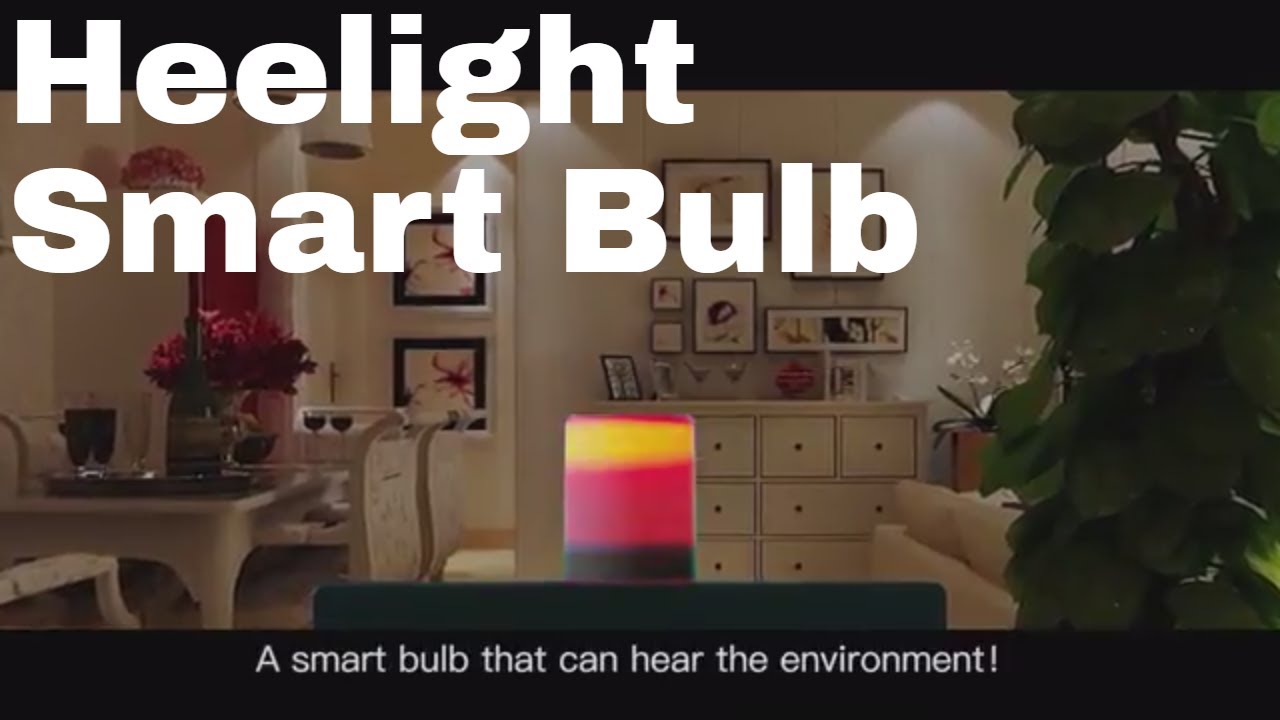
 youtu.be
2-PREDICTION: [Computers] will tap into the worldwide mesh (what the World Wide Web will become once all of its linked devices become communicating Web servers, thereby forming vast supercomputers and memory banks) of high-speed communications and computational resources.
youtu.be
2-PREDICTION: [Computers] will tap into the worldwide mesh (what the World Wide Web will become once all of its linked devices become communicating Web servers, thereby forming vast supercomputers and memory banks) of high-speed communications and computational resources.
yes, this is called the cloud
3-PREDICTION: We’ll have very high-bandwidth wireless communication to the Internet at all times.
yes, we had mobile data in 2017
4-PREDICTION: Displays will be built into our eyeglasses and contact lenses and images projected directly onto our retinas.
yes, we had google glass in 2013
smart contact lenses were only in development in 2017, maybe he just used a poor wording:
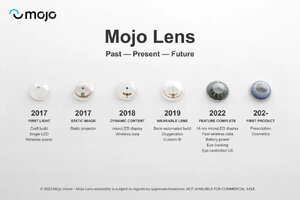

 skarredghost.com
skarredghost.com
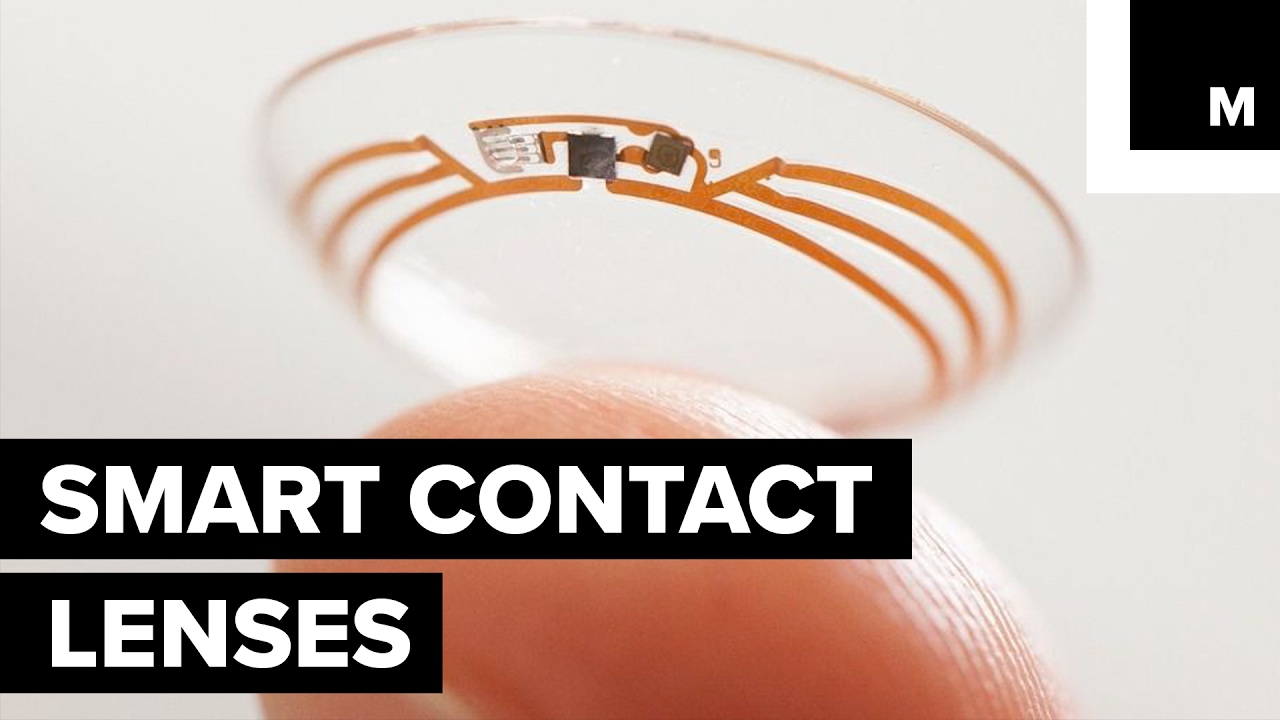
 youtu.be
youtu.be

 youtu.be
5-PREDICTION: Similar tiny devices will project auditory environments.
youtu.be
5-PREDICTION: Similar tiny devices will project auditory environments.
yes, The very first truly wireless earphones were made by a Japanese company named Onkyo in the year 2015. They made their first pair and launched it in September 2015, they called it “Onkyo W800BT”.
6-PREDICTION: These resources will provide high-resolution, full-immersion, visual-auditory virtual reality at any time.
yes, very good VR products were released in 2016
7-PREDICTION: We will also have augmented reality with displays overlaying the real world to provide real-time guidance and explanations.
we had pokemon GO in 2016
in 2014: Google unveiled its Google Glass devices, a pair of augmented reality glasses that users could wear for immersive experiences.
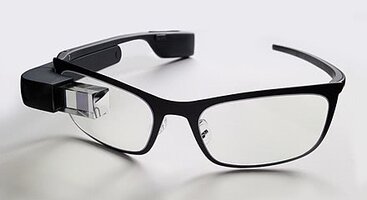
Users wore the AR tech and communicated with the Internet via natural language processing commands. With this device, users could access a variety of applications like Google Maps, Google+, Gmail, and more.
in 2016: Microsoft starts shipping its version of wearable AR technology called the HoloLens, which is more advanced than the Google Glass, but came with a hefty price tag
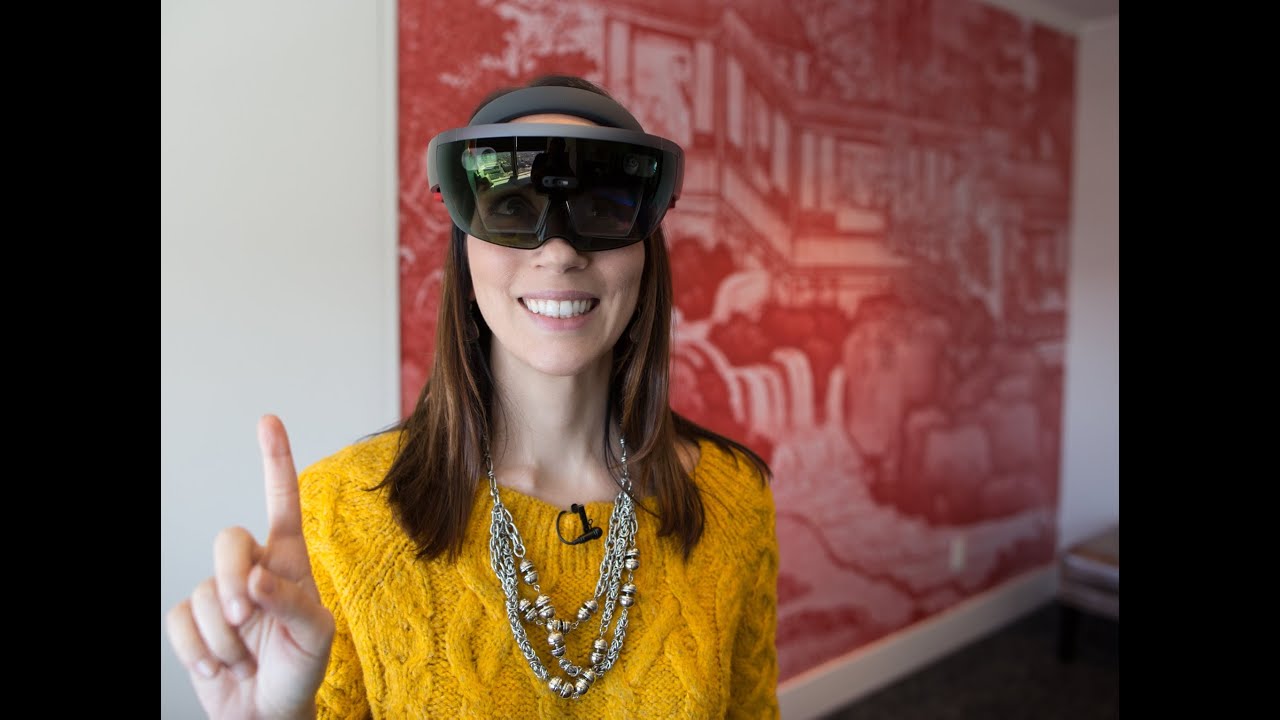
 youtu.be
the headset runs on Windows 10 and is essentially a wearable computer. It also allows users to scan their surroundings and create their own AR experiences
youtu.be
the headset runs on Windows 10 and is essentially a wearable computer. It also allows users to scan their surroundings and create their own AR experiences
in 2017: IKEA released its augmented reality app called IKEA Place

 youtu.be
i would also add that Google maps provides guidance and explanations for the real world
youtu.be
i would also add that Google maps provides guidance and explanations for the real world
8-PREDICTION: We’ll have real-time translation of foreign languages, essentially subtitles on the world.
yes:

 youtu.be
9-PREDICTION: We’ll have access to many forms of online information in our daily activities.
youtu.be
9-PREDICTION: We’ll have access to many forms of online information in our daily activities.
yes
10-PREDICTION: Virtual personalities that overlay the real world will help us with information retrieval and our chores and transactions. These virtual assistants won’t always wait for questions and directives but will step forward if they see us struggling to find a piece of information.”
yes:

 youtu.be
youtu.be
https://kurzweilai.net/images/How-My-Predictions-Are-Faring.pdf
1-PREDICTION: Computers arriving at the beginning of the next decade will become essentially invisible: woven into our clothing, embedded in our furniture and environment.
yes:

Top 4 smart clothes that will impress you
Top 4 smart clothes found on kickstarter this weekPowerlace self-lacing shoes - https://goo.gl/FGP0Z5HALLAM new york SMART JACKET 2.0 - https://goo.gl/L5Ddbb...

12 Pieces of Smart Furniture You’ll Actually Wanna Buy
Be it a smart coffee table or laundry cupboard, the pace at which modern furniture is advancing can’t be imagined. We have curated a list…
 medium.com
medium.com

Heelight A Smart Bulb that can Hear the Environment
the world’s most intelligent bulb that can hear the environment through a digital sound control. You can change the bulb’s color and brightness by sound with...
yes, this is called the cloud
3-PREDICTION: We’ll have very high-bandwidth wireless communication to the Internet at all times.
yes, we had mobile data in 2017
4-PREDICTION: Displays will be built into our eyeglasses and contact lenses and images projected directly onto our retinas.
yes, we had google glass in 2013
smart contact lenses were only in development in 2017, maybe he just used a poor wording:


Mojo Vision smart contact lenses are now "feature complete"
With a breakthrough innovation, startup Mojo Vision has declared that its prototypical smart/AR contact lenses are now "feature complete"
 skarredghost.com
skarredghost.com

Smart contact lenses
Tech giants Sony, Google, and Samsung have filed patents for smart contact lenses that take photos, record video, display information and more.READ MORE: htt...

Google reveals smart contact lens
Google unveils a contact lens that monitors glucose levels in tears, a potential reprieve for millions of diabetics who have to jab their fingers to draw the...
yes, The very first truly wireless earphones were made by a Japanese company named Onkyo in the year 2015. They made their first pair and launched it in September 2015, they called it “Onkyo W800BT”.
6-PREDICTION: These resources will provide high-resolution, full-immersion, visual-auditory virtual reality at any time.
yes, very good VR products were released in 2016
7-PREDICTION: We will also have augmented reality with displays overlaying the real world to provide real-time guidance and explanations.
we had pokemon GO in 2016
in 2014: Google unveiled its Google Glass devices, a pair of augmented reality glasses that users could wear for immersive experiences.

Users wore the AR tech and communicated with the Internet via natural language processing commands. With this device, users could access a variety of applications like Google Maps, Google+, Gmail, and more.
in 2016: Microsoft starts shipping its version of wearable AR technology called the HoloLens, which is more advanced than the Google Glass, but came with a hefty price tag

Microsoft HoloLens: what it’s really like
Hands-on with the developer edition of the Microsoft HoloLens. What happens when holographic robots invade your house?Subscribe: http://goo.gl/G5RXGsCheck ou...
in 2017: IKEA released its augmented reality app called IKEA Place

Say Hej to IKEA Place
IKEA Place is our new app that lets you virtually “place” IKEA products in your space. It’s a new way to experience IKEA, and it’s currently available on iPh...
8-PREDICTION: We’ll have real-time translation of foreign languages, essentially subtitles on the world.
yes:

Testing earbuds that translate in real-time
CNN's Samuel Burke sits down with Waverly Labs CEO Andrew Ochoa to test their language translating earbuds.
yes
10-PREDICTION: Virtual personalities that overlay the real world will help us with information retrieval and our chores and transactions. These virtual assistants won’t always wait for questions and directives but will step forward if they see us struggling to find a piece of information.”
yes:

Shop With Google Home!
You can now use the Google Home to shop through Google Assistant with Googles Express. Currently there are over 50 stores that you can shop from!To shop, use...
i don't speak about other predictions for the 2010s because we haven't gotten back to the computing trendline yet
what does this have to do with non-sentient female android robots, slow aging tech and reverse aging tech?
he predicted we would have android robots by the start of the 2020s, which is 2032 with the 1.52x increase:
he predicted we would have slow down aging tech by 2023 (2035 with the 1.52x increase) and reverse aging tech by 2034 (2052 with the 1.52x increase):
in his 1999 book called the age of spiritual machines on page 107 he predicted that we would have sexbots by the start of the third decade of the new century, which would be 2021:

i know that the word sexbot does not sound like android robot, but in his 2009 book called transcend on page 123 he talked more about what kind of things we would have in 2023, and he talked more about these sexbots:
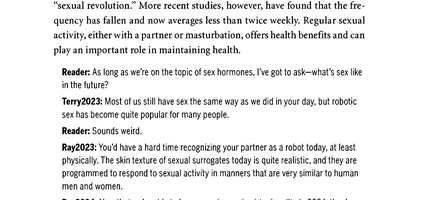
so as you can see they will be android robots because they will look indistinguishable from humans (the reason why he wrote 2023 was because he wanted to talk about a year where many other technologies would be there, he didn't only talk about android robots on that book, he talked about other technologies, medical devices and other things that would be there in 2023)
2021 - 1999 = 22
22 x 1.52 = 33.44
33.44 + 1999 = 2032.44

i know that the word sexbot does not sound like android robot, but in his 2009 book called transcend on page 123 he talked more about what kind of things we would have in 2023, and he talked more about these sexbots:

so as you can see they will be android robots because they will look indistinguishable from humans (the reason why he wrote 2023 was because he wanted to talk about a year where many other technologies would be there, he didn't only talk about android robots on that book, he talked about other technologies, medical devices and other things that would be there in 2023)
2021 - 1999 = 22
22 x 1.52 = 33.44
33.44 + 1999 = 2032.44
sentient female android robots vs non-sentient female android robots, will non-sentient female android robots get rights or be banned? will they be affordable?:
will slow aging tech and reverse aging tech be affordable? will it be banned?:
the uncanny valley cope:
pdfs of the important books made by Kurzweil with his predictions:
android robots can't have rights because consciousness is not a computation, we humans are made of cells with microtubules that connect to the quantum world to create consciousness, machines can't do that so they would just be pieces of plastic imitating human behavior, machines are made of non-living matter, unlike us.

 youtu.be
youtu.be

 youtu.be
youtu.be
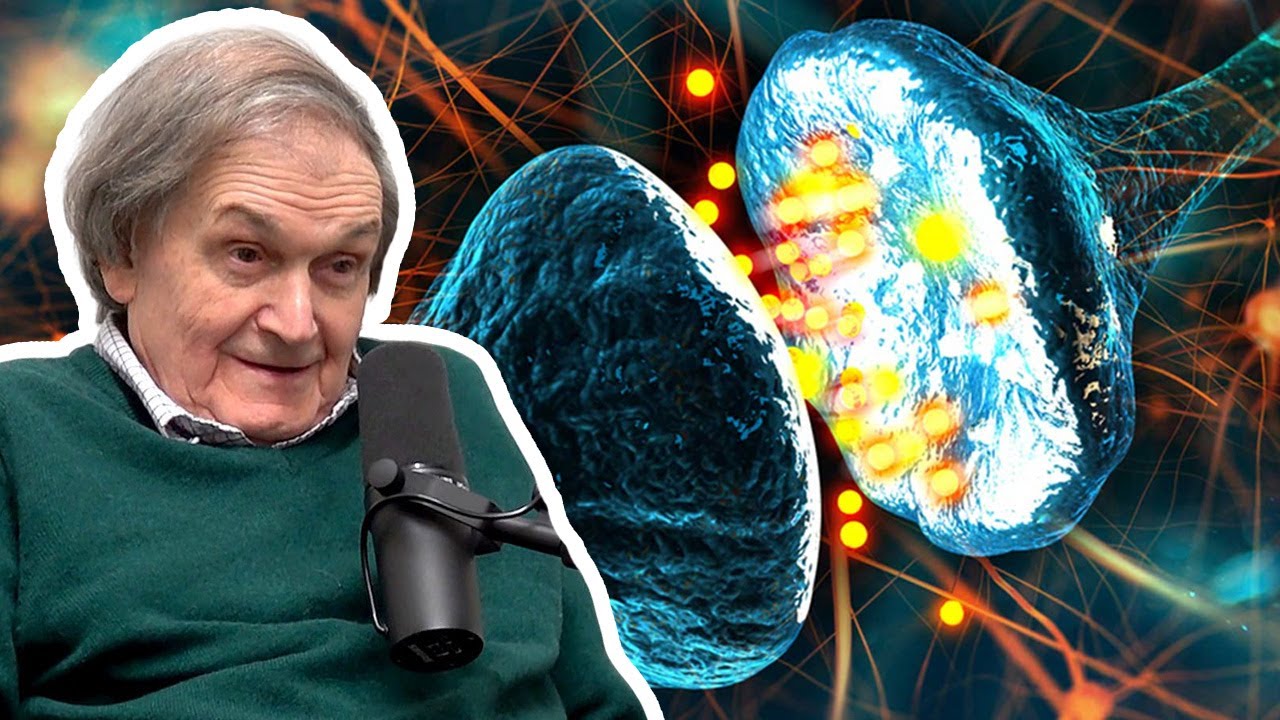
 youtu.be
even if we found a way to create consciousness in an AI, we will not use it on android robots, if we don't use sentient AIs for the androids then they won't be able to get banned.
youtu.be
even if we found a way to create consciousness in an AI, we will not use it on android robots, if we don't use sentient AIs for the androids then they won't be able to get banned.
There is no information technology (information technology means related to computers) today that is not available to everyday consumer, a product will fail if it's not affordable to the average consumer, it takes billions and billions of dollars to do research and create a new product, do you really think someone would waste all that money just to be available to very few people? obviously people want to increase their wealth, making it available to everyday consumers is the best strategy to increase your wealth
there are some information technologies that are illegal because they can harm others, but they are still affordable to the average consumer
also, all men will need them in some years due to the behavioral sink:

 incels.is
for example, the game Detroit: Become Human, why the androids in Detroit: Become Human were not sentient:
incels.is
for example, the game Detroit: Become Human, why the androids in Detroit: Become Human were not sentient:

Joe Rogan - Mathematician on Trying to Measure Consciousness
Taken from Joe Rogan Experience #1216:https://www.youtube.com/watch?v=GEw0ePZUMHA

Asking a Theoretical Physicist About the Physics of Consciousness | Roger Penrose | EP 244
Dr. Peterson recently traveled to the UK for a series of lectures at Oxford and Cambridge. This conversation was recorded during that period with Sir Roger P...

Consciousness is Not a Computation (Roger Penrose) | AI Podcast Clips
Full episode with Roger Penrose (Mar 2020): https://www.youtube.com/watch?v=orMtwOz6Db0Clips channel (Lex Clips): https://www.youtube.com/lexclipsMain channe...
There is no information technology (information technology means related to computers) today that is not available to everyday consumer, a product will fail if it's not affordable to the average consumer, it takes billions and billions of dollars to do research and create a new product, do you really think someone would waste all that money just to be available to very few people? obviously people want to increase their wealth, making it available to everyday consumers is the best strategy to increase your wealth
there are some information technologies that are illegal because they can harm others, but they are still affordable to the average consumer
also, all men will need them in some years due to the behavioral sink:

why the birth rates are going down and why hypergamy is increasing, why humans will go extinct, universe 25 mice experiment on humans
There is this old mouse experiment called "universe 25", where 4 pairs (8) of mice were put on a enclosed square area of 2.57m x 2.57m. They had unlimited access to food, water, and materials needed to build nests. The resources were calculated in such way that the mice could live without...
 incels.is
incels.is
those androids were only done trough programming, and you know that you can't create consciousness by just making 2 rocks move, there is a secret ending in Detroit: Become Human that shows that deviancy was just a virus that Kamski created to take over the world, the androids were never sentient, they were programmed to act like they believed they were sentient by the virus but they were not:

 youtu.be
youtu.be

 youtu.be
youtu.be

 youtu.be
extra:
youtu.be
extra:

Connor and Kamski, asking about virus - how deviancy spreads.
Me failing the Kamski test, asking Kamski about how deviancy spreads. My original playthrough I passed the test. but my curiosity drove me to try the other p...

Detroit Become Human - QUICKEST ENDING (Kamski Secret Ending)
Detroit Become Human - Here is the Quickest Ending possible. Marcus and Kara unfortunately die and Connor fails to find Jericho. So a Kamski ending happens âº...

DETROIT BECOME HUMAN - Connor Becomes a Deviant - ALL ENDINGS
All endings of Connor story if he becomes a deviant and takes the side of Marcus and other deviants. All Detroit: Become Human videos: https://www.youtube.co...
there is no information technology (information technology means related to computers) today that is not available to everyday consumer, a product will fail if it's not affordable to the average consumer, it takes billions and billions of dollars to do research and create a new product, do you really think someone would waste all that money just to be available to very few people? obviously people want to increase their wealth, making it available to everyday consumers is the best strategy to increase your wealth
there are some technologies that are illegal because they can harm others, but they are still affordable to the average consumer
"BuT tHe y0oz ade eVul aNd thEy ade gona trY tO ztop iT!!!!!!!!!!!!!!!!!!!!!!!!!!!!!!!!!!!"
you need to stop browsing 4chan, it's true that jews control and the media and all the companies but you need to understand that they are not evil, they instead have too much empathy, and individualism (which creates better ideas to be successful and gives a higher IQ), to understand it you need to read this thread:

 incels.is
they are not gonna be banned and you need to stop believing those 4 chan memes, Ray Kurzweil was born to Jewish parents
incels.is
they are not gonna be banned and you need to stop believing those 4 chan memes, Ray Kurzweil was born to Jewish parents
there are some technologies that are illegal because they can harm others, but they are still affordable to the average consumer
"BuT tHe y0oz ade eVul aNd thEy ade gona trY tO ztop iT!!!!!!!!!!!!!!!!!!!!!!!!!!!!!!!!!!!"
you need to stop browsing 4chan, it's true that jews control and the media and all the companies but you need to understand that they are not evil, they instead have too much empathy, and individualism (which creates better ideas to be successful and gives a higher IQ), to understand it you need to read this thread:

why hapa children develop no affective empathy, explained using an study
basically, east asians have less affective empathy than Northwest Europeans, but east asians have a gene that makes them more conformist and less individualistic, which make them commit less crimes, if a white guy has a child with an east asian girl, the baby will inherit the cognitive empathy...
 incels.is
incels.is
many people think that as the robot gets closer to look human the robot will look worse because of the uncanny valley but no, it works the other way around, this works like the blackpill, ugly robots will be seen as ugly but handsome robots will be more and more appealing each time they get closer to look human, you can see that here:

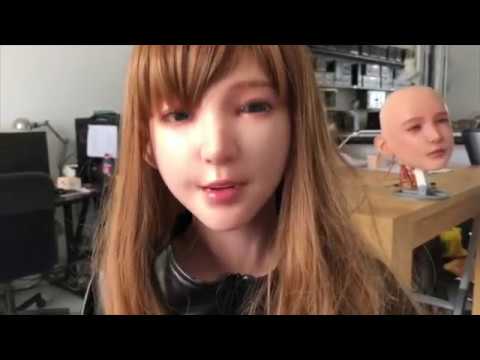 2018 video:
2018 video:


(1999) the age of spiritual machines book:
https://jimdo-storage.global.ssl.fa.../THE_AGE_OF_SPIRITUAL_MACHINES_WHEN_COMPU.pdf
(2005) the singularity is near book:
https://paisdospuntocero.files.wordpress.com/2018/04/book-kurzweil-singularity-is-near-1.pdf
(2009) transcend book:
https://www.docdroid.net/3pBqeUW/transcend-nine-steps-to-living-well-forever-pdfdrive-1-pdf#page=22
(2009) transcend book pdfdrive:
https://www.pdfdrive.com/transcend-nine-steps-to-living-well-forever-e188845476.html
https://jimdo-storage.global.ssl.fa.../THE_AGE_OF_SPIRITUAL_MACHINES_WHEN_COMPU.pdf
(2005) the singularity is near book:
https://paisdospuntocero.files.wordpress.com/2018/04/book-kurzweil-singularity-is-near-1.pdf
(2009) transcend book:
https://www.docdroid.net/3pBqeUW/transcend-nine-steps-to-living-well-forever-pdfdrive-1-pdf#page=22
(2009) transcend book pdfdrive:
https://www.pdfdrive.com/transcend-nine-steps-to-living-well-forever-e188845476.html
